Landschlacht, Switzerland, Friday 11 December 2020
Have you ever heard the phrase:
“I haven’t met a/an (insert a type here) I haven’t liked.“?
I myself have used this phrase to describe Turkish people (mostly ex-pats) whom I have personally met.
This phrase reassures me whenever I find myself questioning the wisdom of my moving to Turkey in the New Year.

The topic of this post is another country which everyone simultaneously knows and yet doesn’t know.
A country that is so far away from the rest of the world that I have met only one native of that land in person and I have never had the pleasure of visiting her homeland.
It is a land with only 4.3 million people, compared with eight million Swiss, 21 million Aussies, 30 million Canadians, 52 million English, 127 million Japanese, 242 million Indonesians and 307 million Americans.

It is a land more than twice the size of England and as long as Italy if the toe of the boot-shaped Italian peninsula were removed.
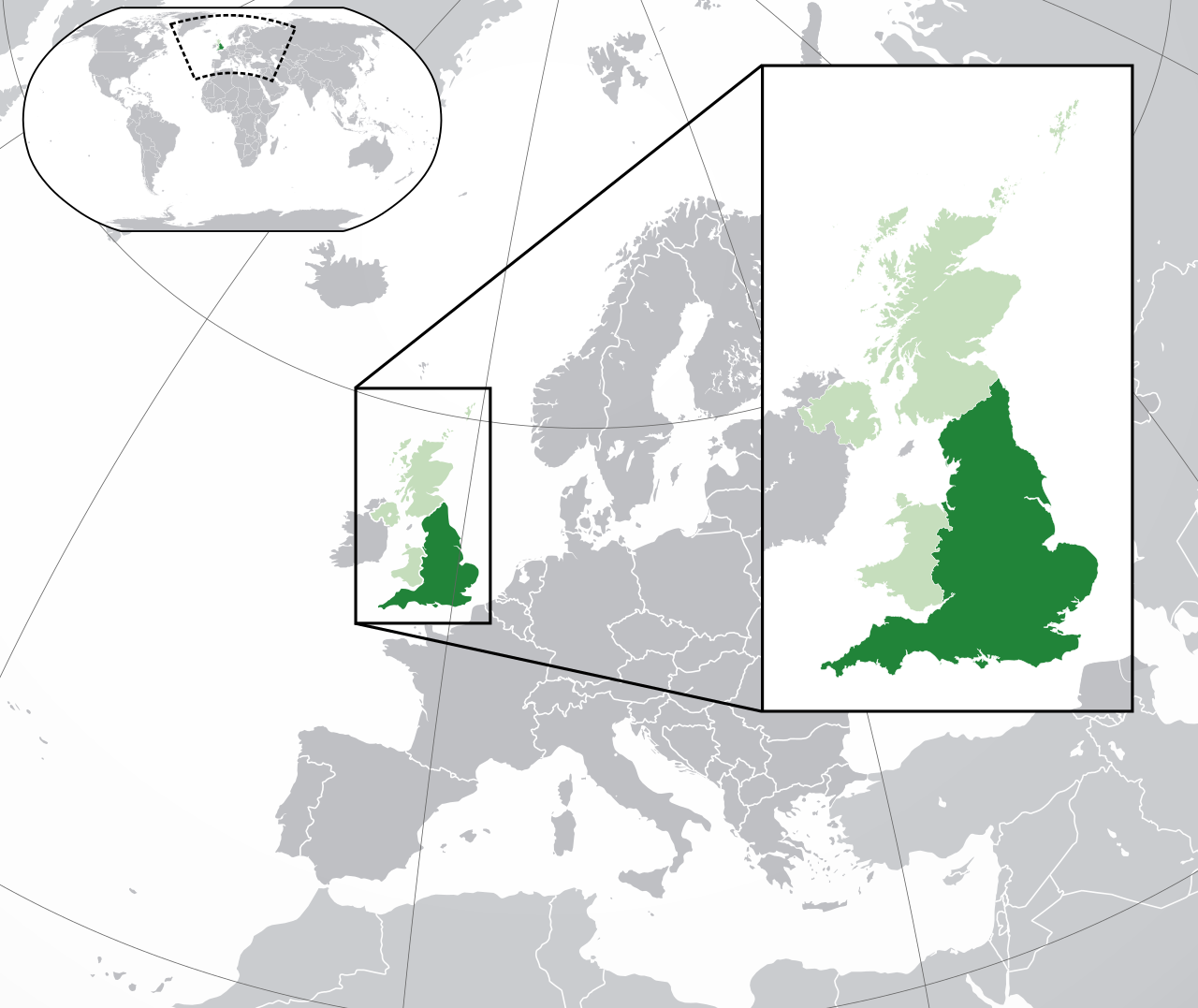

(Ciao, Calabria!)

It is a nation seven times bigger than Switzerland.

It is a nation so small that it could fit into Australia 28 times, into Canada or the US 37 times, or into Russia 64 times.
It is God’s own country – the Godzone – a land of unsurpassed natural beauty, friendly welcomes, fair play for one and all, and a place of happily ever afters.
This is how New Zealanders see New Zealand.

Give Kiwis – (the people, not the fruit or the flightless bird) – half a chance and they will go out of their way to prove it to you.

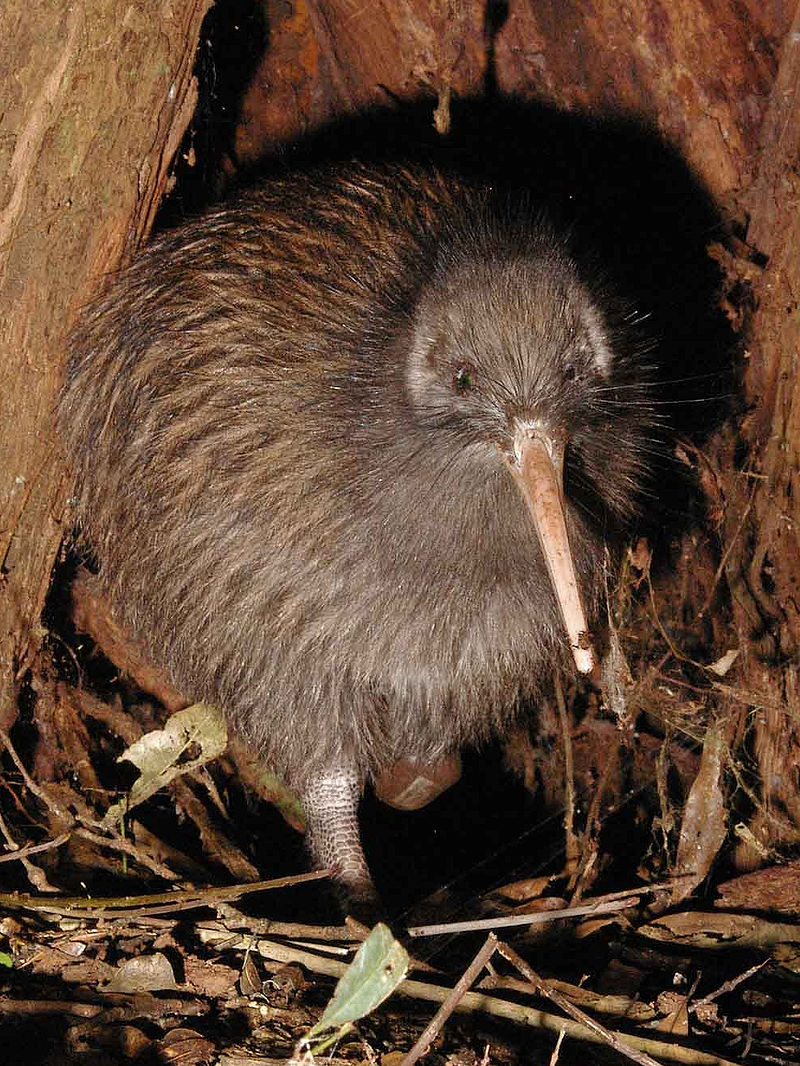
Indeed, visitors to New Zealand (or so I am told) can expect to be constantly set upon by the insatiably hospitable locals of “New Zild” (as Kiwis pronounce it).

Above: Flag of New Zealand
If the rumours are to be believed – (And if I can’t believe my cousin Steve, who has been there – as an athlete in the 1990 Commonwealth Games in Auckland – who can I believe?) – a quick chat with a passing Kiwi on any New Zild street can very quickly turn into an invitation to dinner, a weekend stay in the spare room or an extended guided tour of the local sights.
Kiwis are fiercely proud of their country and love nothing better than to show it off.

At least until 28 February 2020 when the first corona virus case was detected on New Zild shores.
As of 7 December 2020, New Zild has had:
- 2,085 cases
- 2,006 recoveries
- 25 deaths

Above: Covid-19 outbreak cases in New Zealand as of 30 September 2020: the darker the region, the more cases therein.
Worldwide as of 7 December 2020:
- 68.2 million cases
- 43.9 million recoveries
- 1.56 million deaths

Above: COVID-19 Outbreak World Map Total Deaths per Capita (as of 9 December 2020)
All borders and entry ports of New Zealand were closed to all non-residents on 19 March 2020, with returning citizens and residents being required to self-isolate.

Since 10 April, all New Zealanders returning from overseas must go into two weeks of managed isolation (compulsory quarantine)
A four-level alert system was introduced on 21 March to manage the outbreak within New Zealand.

| No. | Name | Description and Measures |
|---|---|---|
| 1 | Prepare | COVID-19 is uncontrolled overseas. The disease is contained in New Zealand and there are sporadic imported cases, but isolated household transmission could be occurring. Border entry measures to minimise risk of importing COVID-19 cases.Intensive testing for COVID-19. Rapid contact tracing of any positive cases. People arriving in New Zealand without symptoms of COVID-19 go into a managed isolation facility for at least 14 days. People arriving in New Zealand with symptoms of COVID-19 or who test positive after arrival go into a quarantine facility and are unable to leave their room for at least 14 days. Mandatory self-isolation may be applied. Schools and workplaces are open and must operate safely. No restrictions on personal movement or gatherings. Stay home if you are sick, report flu-like symptoms. Wash and dry hands, cough into elbow, do not touch your face. No restrictions on domestic transport – avoid public transport or travel if sick. Businesses and public transport must display QR codes to allow for contact tracing. |
| 2 | Reduce | The disease is contained, but the risk of community transmission remains. Household transmission could be occurring, and there are single or isolated cluster outbreaks. People can connect with friends and family, go shopping, or travel domestically, but should follow public health guidance. Physical distancing of two metres from people you do not know when out in public is recommended, with one metre physical distancing in controlled environments like workplaces unless other measures are in place. No more than 100 people at indoor or outdoor gatherings (subject to any lower limit, e.g. fire regulations). Sport and recreation activities are allowed, subject to conditions on gatherings, contact tracing, and – where practical – physical distancing. Public venues can open but must comply with public health measures. Health and disability care services operate as normally as possible. Businesses can open to the public, but must follow public health guidance including in relation to physical distancing and contact tracing. Alternative ways of working encouraged where possible (e.g. remote working, shift-based working, physical distancing, staggering meal breaks, flexible leave). Schools, early childhood education and tertiary education providers can open with appropriate public health measures in place. People at higher risk of severe illness from COVID-19 (e.g. those with underlying medical conditions, especially if not well controlled, and seniors) are encouraged to take additional precautions when leaving home. They may work, if they agree with their employer that they can do so safely. Face coverings are required on public transport and aircraft, but not school buses or Cook Strait ferries. Children under 12 are exempt along with passengers in taxis or rideshare services and people with disabilities or mental health conditions. |
| 3 | Restrict | There is a high risk the disease is not contained. Community transmission might be happening. New clusters may emerge but can be controlled through testing and contact tracing. People instructed to stay home in their support bubble other than for essential personal movement – including to go to work, school if they have to or for local recreation. Physical distancing of two metres outside home (including on public transport) or one metre in controlled environments like schools and workplaces. People must stay within their immediate household bubble, but can expand this to reconnect with close family / friends, or bring in caregivers, or support isolated people. This extended bubble should remain exclusive. Schools (years 1 to 10) and Early Childhood Education centres can safely open, but will have limited capacity. Children should learn at home if possible. People must work from home unless that is not possible. Businesses can open premises, but cannot physically interact with customers. Low risk local recreation activities are allowed. Public venues are closed (e.g. libraries, museums, cinemas, food courts, gyms, pools, playgrounds, markets). Gatherings of up to 10 people are allowed but only for wedding services, funerals and baptisms. Physical distancing and public health measures must be maintained. Healthcare services use virtual, non-contact consultations where possible. Inter-regional travel is highly limited (e.g. for essential workers, with limited exemptions for others). People at high risk of severe illness (older people and those with existing medical conditions) are encouraged to stay at home where possible and take additional precautions when leaving home. They may choose to continue to work. |
| 4 | Eliminate | It is likely the disease is not contained. Sustained and intensive community transmission is occurring, and there are widespread outbreaks and new clusters. People must stay at home (in their bubble) other than for essential personal movement. Safe recreational activity is allowed in local area. Travel is severely limited. All gatherings cancelled and all public venues closed. Businesses closed except for essential services (e.g. supermarkets, pharmacies, clinics, petrol stations) and lifeline utilities. Educational facilities closed. Rationing of supplies and requisitioning of facilities possible. Reprioritisation of healthcare services. |
The Alert Level was initially set at Level 2, but was subsequently raised to Level 3 on the afternoon of 23 March.
Beginning on 25 March, the Alert Level was moved to Level 4, putting the country into a nationwide lockdown.

The Alert Level was moved back down to Level 3 on 27 April, partially lifting some lockdown restrictions, and down to Level 2 on 13 May, lifting the rest of the lockdown restrictions while maintaining physical distancing and gathering size limits.
The country moved down to Level 1 on 8 June, removing all remaining restrictions except border controls.
On 11 August, four cases of COVID-19 from an unknown source were reported in Auckland, the first from an unknown source in 102 days.
At noon the following day, the Auckland region moved up to alert level 3, while the rest of the country was moved to level 2.
On 30 August at 11:59 pm, Auckland moved down to “Alert Level 2.5“, a modified version of Alert Level 2 with limitation on public gatherings, funerals, and weddings.
On 23 September at 11:59 pm, Auckland moved down to Alert Level 2, after the rest of New Zealand moved to Alert Level 1 on 21 September at 11:59pm.
On 7 October, Auckland also moved down to level 1.
New Zealand’s approach to the pandemic has been widely praised internationally for its quick and tough action over the virus, having completed 1,030,115 tests (one in four people) as of 18 October 2020.

Smart people, wise people, a compassionate country.
Is religion the reason?
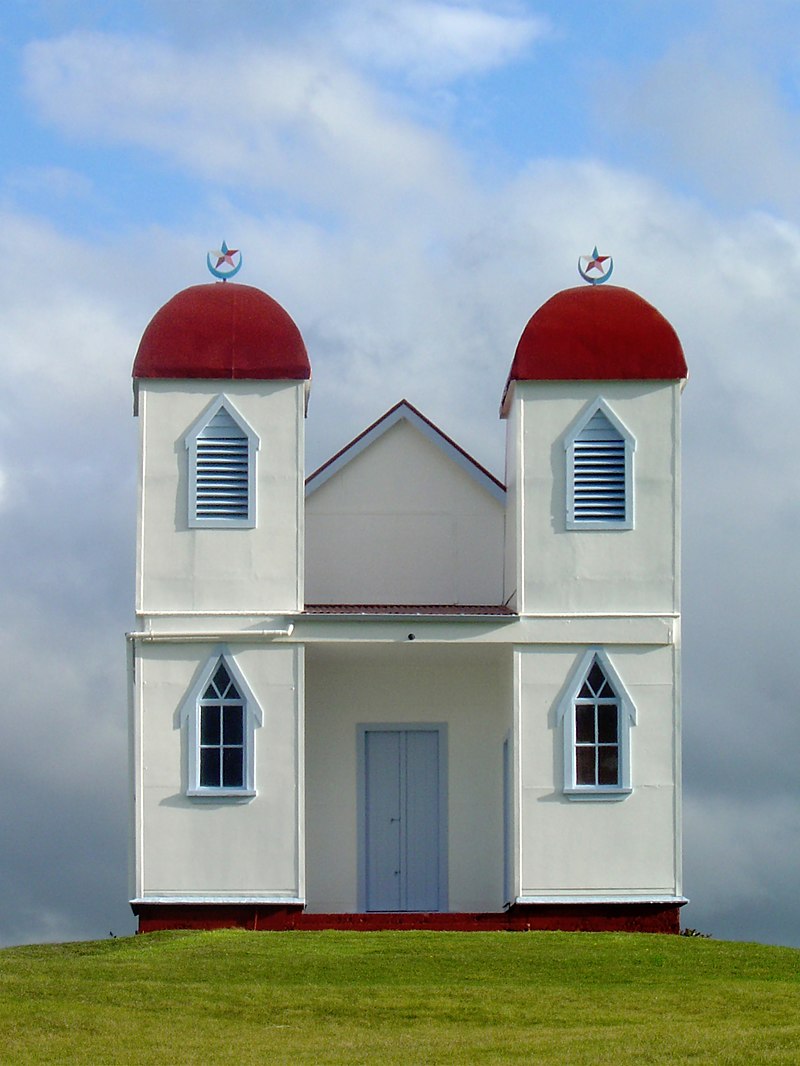
Above: A Ratana church on a hill near Raetihi (a town in the centre of North Island). The two-tower construction is characteristic of Rātana buildings.
Irreligion in New Zealand refers to atheism (there are no deities), agnosticism (the supernatural is unknown), deism (belief in God if supported by facts), religious scepticism (do we need religion?) and secular humanism (focus on humanity not faith) in New Zealand society.

Former Prime Ministers John Key and Helen Clark were agnostic, as is current Prime Minister Jacinda Ardern.

Above: Helen Clark (Prime Minister: 1999 – 2008)

Above: John Key (Prime Minister: 2008 – 2016)

Above: Jacinda Ardern (Prime Minister since 2017)
Post-war New Zealand has become a highly secular country, meaning that religion does not play a major role in the lives of many of the population.
That being said, although New Zealand has no established religion, Christianity has been the majority religious affiliation since European settlement in the 19th century.
Despite the lack of established religion, this is not to say that there is disrespect shown to those who follow a faith.

Above: The Church of the Good Shepherd on the shore of Lake Tekapo (South Island). The stone church was built as a memorial to the pioneers of the Mackenzie region.
Religion in New Zealand encompasses a wide range of groups and beliefs.
Almost half (48.6%) of New Zealanders stated they had no religion in the 2018 census and 6.7% made no declaration.
However if a faith is followed, Christianity remains the most common religion.
37% of the population in the 2018 census identified themselves as Christians.

Above: St. Patrick’s Cathedral, Auckland (North Island)
Around 6% of the population is affiliated with non-Christian religions.
Hinduism is the second-most popular religion, claiming 2.6% of the population and Sikhism is the fastest-growing faith. (123,000 Hindus / 40,908 Sikhs)

Above: Bharatiya Mandir (the oldest and largest Hindu temple in NZ), Auckland

Above: Gurdwara Guru Ravidass (Sikh temple), Auckland
1.3% profess to be Muslims. (61,455 people)

Above: Al Noor Mosque, Riccarton, Christchurch (South Island)
1.1% profess to be Buddhists. (15,000+ people)

Above: Fo Guang Shan (Buddhist temple), Auckland
There are 5,274 Jews, 2,925 Baha’is and 3,699 Maoris in New Zealand.

Above: Jewish synagogue, Christchurch


Above: Māori Christian church in Akaroa (South Island)
The respect given to all faiths can best examplied when we consider Kiwi attitudes towards Islam.
In 2006, two newspapers in New Zealand decided to republish controversial Danish cartoons depicting Muhammad, the prophet of Islam.

Above: The offending Danish newspaper

Above: An example of one of the banners that was posted across the web to encourage support for Danish goods.
The Muslim community registered its displeasure through press statements and a small peaceful march in Auckland.
The editors said they did not mean offence but would not back down.
Prime Minister Helen Clark and opposition leader Don Brash both made statements that the cartoons were not appreciated if they deeply offended members of the New Zealand community, but that such decisions were for editors to make, not politicians.
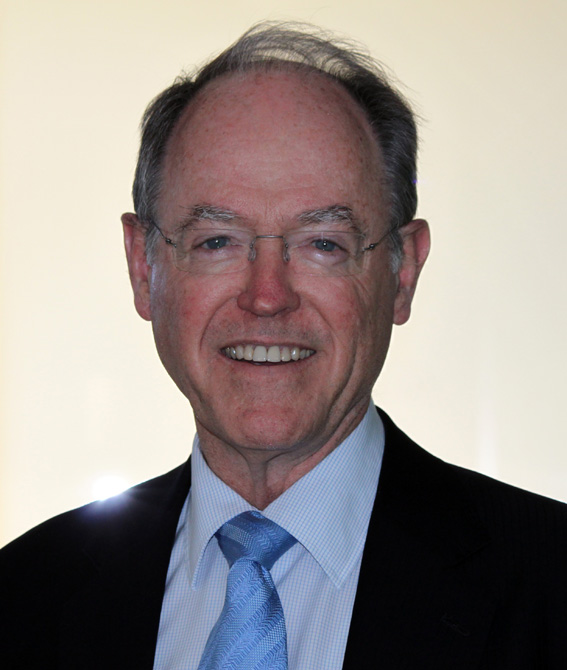
Above: Don Brash
Muslim leaders and the editors got together with the Race Relations office, and Jewish and Christian representatives in Wellington.
As a result of this meeting the editors said they would not apologise, but in good faith would refrain from publishing the offending images again.
The New Zealand Muslim leadership, through the Federation of Islamic Associations of New Zealand (FIANZ), then proceeded in good faith to consider the matter closed, and drafted letters to 52 Muslim countries reversing their earlier stance and asking that New Zealand products not be boycotted.

In November 2016, Mohammad Anwar Sahib, the Imam of the Al-Taqwa mosque in Manukau, Auckland and a religious adviser to the FIANZ, drew controversy when he made offensive remarks about Jews, Christians, and women in a series of speeches that were posted by the right-wing blogger Cameron Slater on YouTube.
Sahib’s comments were condemned by a wide range of figures and groups in New Zealand society, including:
- the FIANZ’s President Hazim Arafeh
- the Islamic Women’s Council of New Zealand (IWCNZ)
- the Race Relations Commissioner Dame Susan Devoy
- the Ethnic Communities Minister Sam Lotu-Iiga
- the ACT party (liberal-libertanian) David Seymour
- the New Zealand First (nationalist-populist) leader Winston Peters
- the New Zealand Jewish Council
- the Ahmadiyya (Islamic revival) community

Above: Imam Dr. Mohammad Anwar Sahib
In response to negative publicity, Sahib was dismissed from his advisory position at the FIANZ.
Sahib denied accusations of racism and issued a statement claiming his statements had been taken out of context.
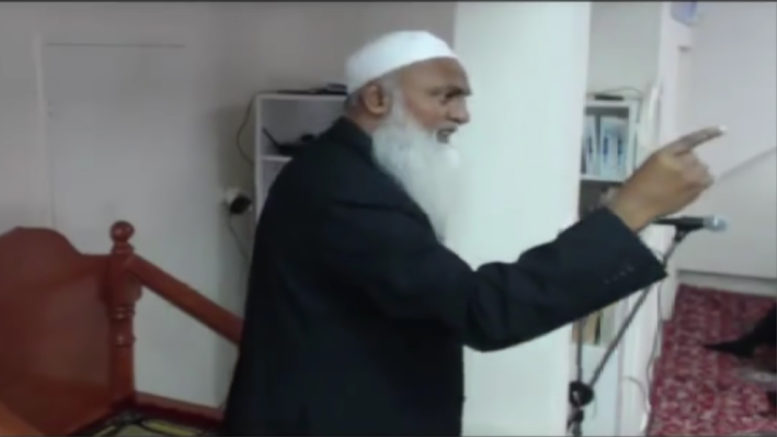
Above: Mohammad Anwar Sahib
In late October 2017, it was reported in the media that the first secretary of the Iranian Embassy Hormoz Ghahremani, the visiting Iranian cleric Hojatoleslam Shafie, and community elder Sayed Taghi Derhami had made remarks denying the Holocaust and attacking Israel at the Shia Islamic Ahlulbayt Foundation in Pakuranga, Auckland during a meeting to commemorate Quds Day (the last Friday of Ramadan, expressing support for Palestine and opposing Israel and Zionism) in June.
A video of the speeches was posted on the Foundation’s YouTube channel.

Above: Flag of Iran
These remarks were criticized by the New Zealand Jewish Council and the pro-Israel think tank the Israel Institute of New Zealand, who advocated Ghahremani’s expulsion.
Ghahremani later clarified that his actions represented the Iranian government’s official position on Israel.

Above: Flag of Israel
Race Relations Commissioner Susan Devoy also condemned the trio’s anti-Semitic statements.

Above: Susan Devoy
The opposition (centre-right) New Zealand National Party’s foreign affairs spokesperson Gerry Brownlee also urged the incumbent Labour / New Zealand First / Green coalition government to expel Ghahremani.

Above: Gerry Brownlee
In response, Foreign Minister Winston Peters countered that the incident had occurred under the previous National Party government’s watch.
Peters indicated that the Ministry of Foreign Affairs and Trade had summoned Ghahremani to express its disapproval.

Above: Winston Peters
On 15 March 2019, a terrorist attacked worshippers at two mosques in Christchurch, killing 51 people, including 42 at the Al Noor Mosque in Riccarton, seven at the Linwood Islamic Centre, and two who died in hospital.

Above: Al Noor Mosque in Riccarton. Built over 1984–85, it was the world’s southernmost mosque until 1999. Al Noor Mosque was one of the two mosques targeted.

Above: Linwood Islamic Centre
The attacks took place on a Friday afternoon, when worshippers inside the mosques were gathering for Jumu’ah (Friday prayer).
The accused perpetrator of the attack was an Australian described as a white supremacist who intended to create an “atmosphere of fear” against Muslims.
However, a week after the attack, a nationwide moment of silence was observed in New Zealand on Friday – ushered in by the Muslim call to prayer.
The prayer and two-minute reflection were broadcast live on national media outlets and came as an estimated 20,000 people, including Prime Minister Jacinda Ardern, gathered metres from the Al Noor mosque in the city of Christchurch for Muslim Friday prayers.

Above: Prime Minister Jacinda Ardern visited members of the Muslim community at the Phillipstown Community Hub in Christchurch the day after the attack.
Gamal Fouda, an imam who survived the attack at Al Noor mosque, said:
“Last Friday I stood in this mosque and saw hatred and rage in the eyes of the terrorist, but today from the same place I look out and I see the love and compassion in the eyes of thousands of New Zealanders and human beings from around the globe.”

Above: Imam Gamal Fouda
Speaking to mourners in the crowd, Prime Minister Ardern said:
“New Zealand mourns with you.
We are one.”
Quoting Muhammad, she said:
“The believers in their mutual kindness, compassion, and sympathy are just like one body.
When any part of the body suffers, the whole body feels pain.”

Above: “Allah” in Arabic
Brenton Harrison Tarrant, a 28-year-old man from Grafton, New South Wales, Australia, arrested shortly after the shootings, had live-streamed the first shooting on Facebook.
Prior to the attack, Tarrant had published an online manifesto.
Both the video and manifesto were subsequently banned in New Zealand.
After police investigation, Tarrant was charged with 51 murders, 40 attempted murders, and engaging in a terrorist act.
He was sentenced to life imprisonment without the possibility of parole on 27 August 2020.
It was the first time a life imprisonment without parole sentence was handed down in New Zealand.
The attack was linked to an increase in white supremacy and alt-right extremism globally observed since about 2015.
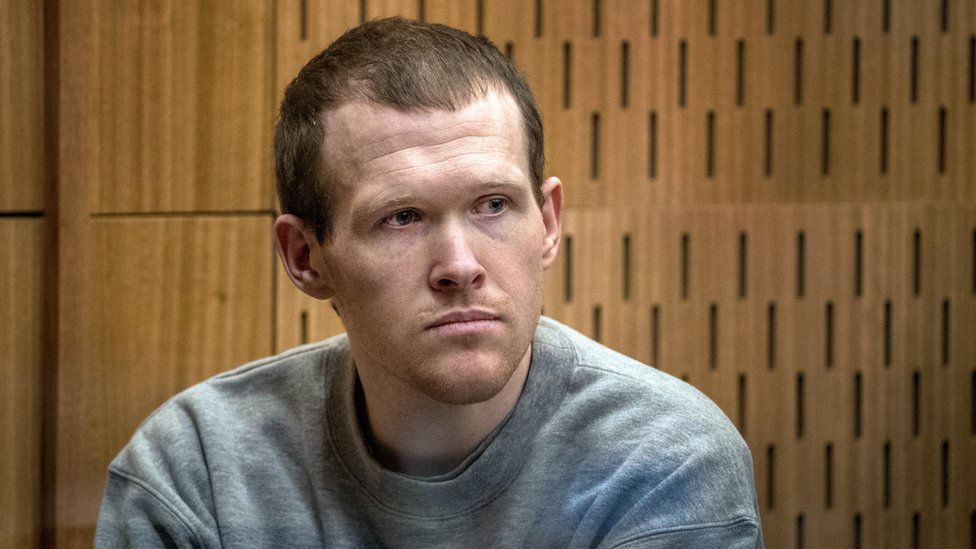
Above: Brenton Tarrant
(Nine days after the attack, a mosque in Escondido, California, was set on fire.
Police found graffiti on the mosque’s driveway that referenced the Christchurch shootings, leading them to investigate the fire as a terrorist attack.

Above: Dar-ul-Arqam Mosque, Escondido, California
A mass shooting later took place at a synagogue in nearby Poway on 27 April 2019, killing one person and injuring three others.

Above: Altman Family Chabad Community Center, Poway, California
The suspect in the shooting, John T. Earnest, also claimed responsibility for the fire and praised the Christchurch shootings in a manifesto.
He and Tarrant were said to have been radicalised on 8chan’s /pol/ discussion board.
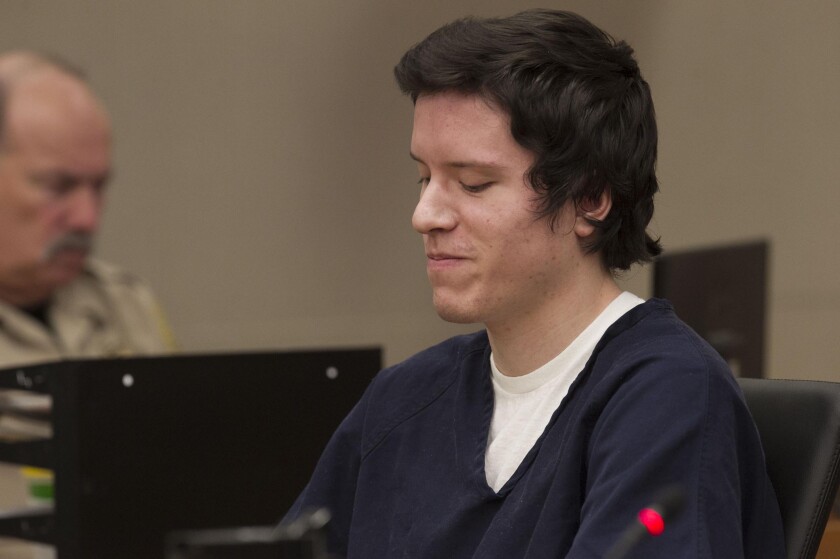
Above: John T. Earnest
On 3 August 2019, Patrick Crusius killed 23 people and injured 23 others in a mass shooting in a Walmart in El Paso, Texas.

Above: Walmart, El Paso, Texas
In a manifesto posted to 8chan’s /pol/ board, Crusius expressed support for and inspiration from the Christchurch shootings.
Above: Patrick Wood Crosius
On 10 August 2019, Philip Manshaus tried to attack a mosque in Baerum, Norway, and livestream it on Facebook.

Above: Al-Noor Islamic Centre, Baeram, Norway
Manshaus referred to Tarrant as a saint online and posted an image depicting Tarrant, Crusius, and Earnest as “heroes“.
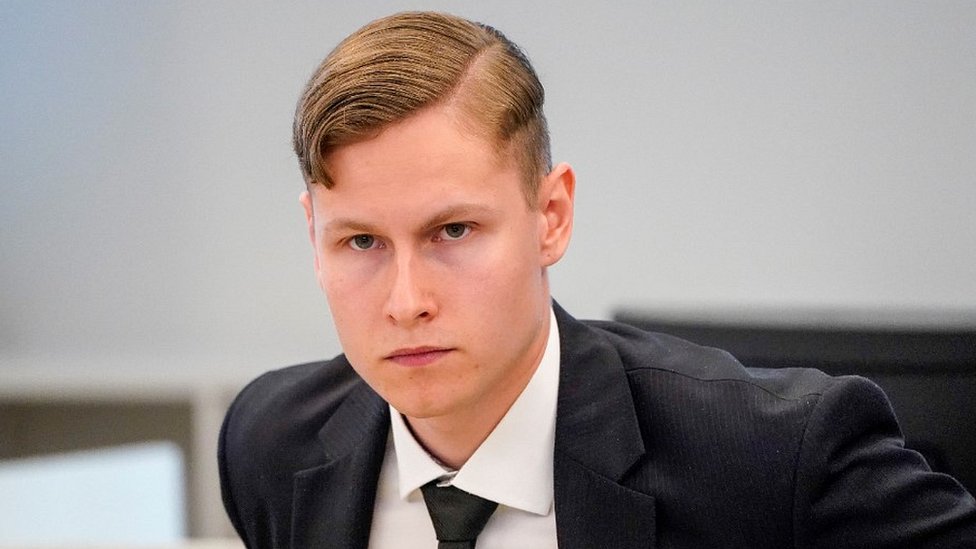
Above: Philip Manshaus
Two New Zealand-based anti-immigration groups, the Dominion Movement and the New Zealand National Front, quickly condemned the attacks, distanced themselves from the perpetrator, and shut their websites down.

Above: Logo of the National Front
However, the broader far-right culture celebrated the attacks and “sanctified” Tarrant as a central figure.
Tarrant’s manifesto was translated and distributed in more than a dozen different languages, and a number of supporters on 8chan made photo and video edits of the shooting.
Some extremists were inspired by Tarrant, committing violent incidents and deadly attacks of their own, such as those in Poway, El Paso, and Baerum.
The United Kingdom’s domestic intelligence service, MI-5, launched an inquiry into Tarrant’s possible links to the British far-right.

Ahmed Bhamji, chairman of the largest mosque in New Zealand, spoke at a rally on 23 March in front of one thousand people.
He claimed that Mossad, the Israeli foreign intelligence agency, was behind the attack.

Above: Logo of Mossad
The claim has been widely described as an unfounded, antisemitic conspiracy theory.
The chairman of the Federation of Islamic Associations of New Zealand said that Bhamji’s statement did not represent other New Zealand Muslims, but Bhamji defended his statements.
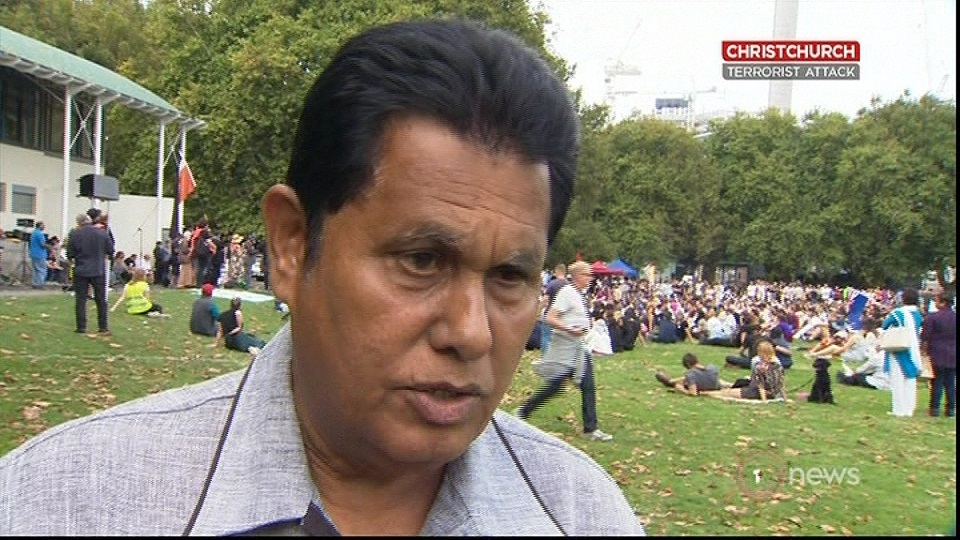
Above: Ahmed Bhamji
According to Sri Lankan State Defence Minister Ruwan Wijewardene, an early inquiry indicated that the Sri Lanka Easter bombings on 21 April 2019 were retaliation for the Christchurch attack.

Above: Ruwan Wijewardene
However, some analysts believe the attacks to have been planned before the Christchurch attack, and any linkage was questioned by New Zealand’s government — with Prime Minister Ardern saying she was not aware of any intelligence linking the two.
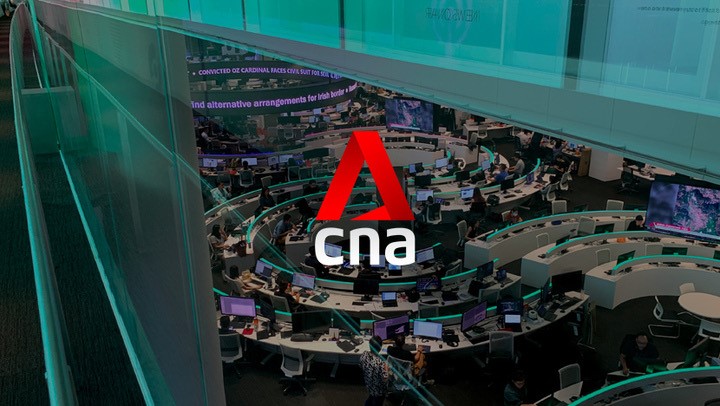
Politicians and world leaders condemned the attack.
Queen Elizabeth II, New Zealand’s head of state, said she was “deeply saddened” by the attacks.
Other politicians and world leaders also condemned the attacks, with some attributing them to rising Islamophobia.
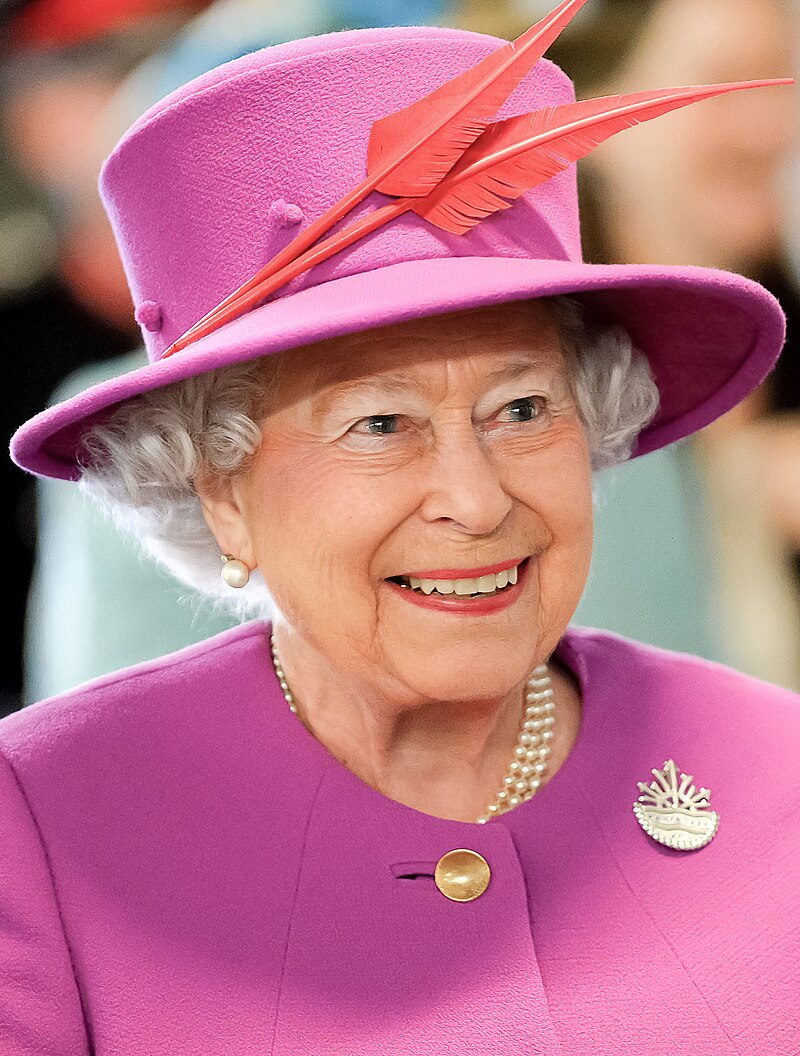
Above: Her Majesty Queen Elizabeth II
The Prime Minister of Pakistan, Imran Khan, announced that Pakistani emigrant Naeem Rashid, who charged at the gunman and died as a result of the attack on the Al Noor Mosque, would be posthumously honoured with a national award for his courage.

Above: Prime Minister Imran Khan
The Prime Minister of Bangladesh, Sheikh Hasina, announced that:
“In the future, whenever we send our cricket team abroad, we will do that after examining and reviewing the security matters of the host countries.”
She added that Bangladesh had always provided highest security to visiting foreign teams.
Above: Prime Minister Sheikh Hasina
Serbia’s Foreign Minister Ivica Dacic condemned the Christchurch attack and said that the shooter “has nothing to do with Serbia.”
Serbian President Aleksander Vucic criticised media for implying that Serbs should be blamed for the shootings.
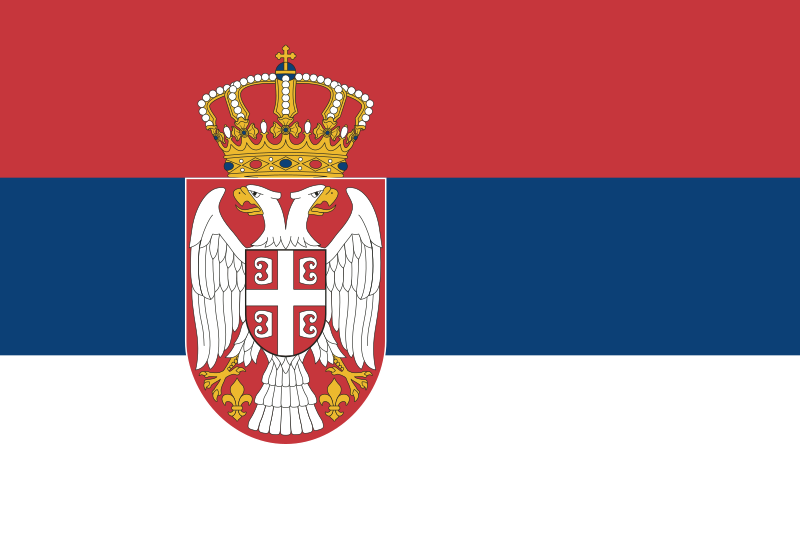
Above: Flag of Serbia
The President of Turkey, Recep Tayyip Erdogan, showed footage taken by Tarrant to his supporters at campaign rallies for upcoming local elections.
The New Zealand and Australian governments, as well as Turkey’s main opposition party, criticised his actions.

Above: Flag of Turkey
US President Donald Trump condemned the “horrible massacre“.
When asked after the attacks if he thought white nationalists were a growing threat around the world, Trump replied:
“I don’t really.
I think it’s a small group of people that have very, very serious problems.
It’s certainly a terrible thing.“

Above: Trump commenting on Christchurch shootings
Prime Minister Jacinda Ardern described the incident as “one of New Zealand’s darkest days“.
The government established a royal commission of inquiry into its security agencies in the wake of the shootings, which were the deadliest in modern New Zealand history and the worst ever committed by an Australian national.
The commission submitted its report to the government on 26 November 2020, the details of which were made public on 7 December.
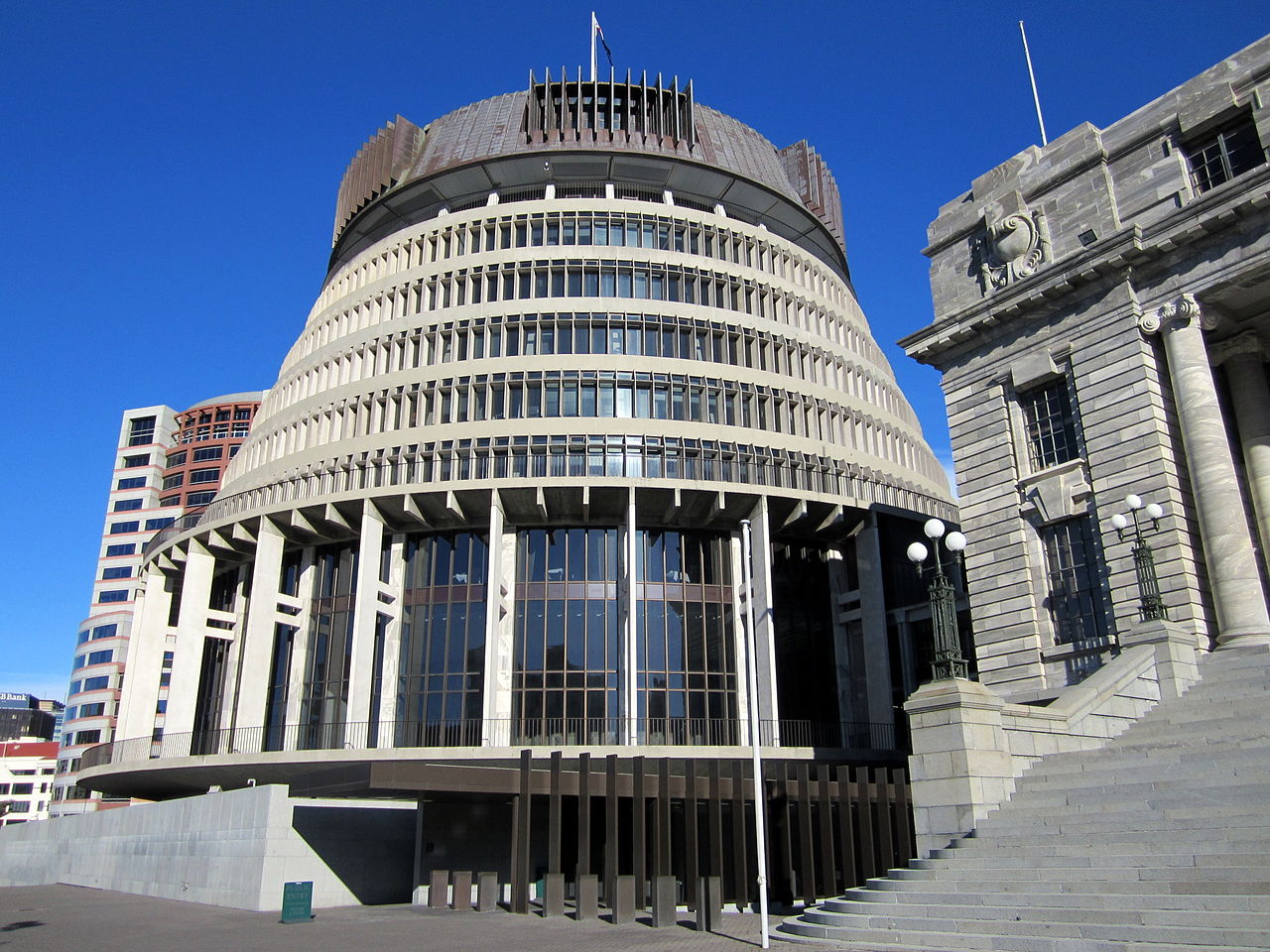
Above: The Beehive (government executive branch HQ), Wellington (North Island)
Several media organisations in Australia and tabloid-news websites in the UK broadcast parts of the video, up to the point the gunman entered the building, despite pleas from the New Zealand Police not to show it.
Sky Television New Zealand temporarily stopped its syndication of Sky News Australia after that network showed the footage, and said it was working with Sky News Australia to prevent further displays of the video.
At least three Internet service providers in New Zealand blocked access to 8chan and other sites related to the attacks, and temporarily blocked other sites hosting the video such as 4chan, LiveLeak, and Mega until they comply with requests to take down copies of the video.
The administrator of the online message board Kiwi Farms refused a New Zealand Police request for the data of users who made posts related to Tarrant and the attack.

Above: Flag of the New Zealand Police
Social media sites including Facebook, YouTube, Reddit and Twitter said they were working diligently to remove the video from their platforms and would also remove anything posted in support of the attacks.
According to Facebook, no complaints were made about the video until 12 minutes after the live-stream ended.
The original video from Tarrant himself had been viewed fewer than 200 times before Facebook was notified of its content, and it had been viewed only 4,000 times before it was removed, which happened within minutes of notification.
Facebook created a digital hash fingerprint to detect further uploads, however by this point the video had been propagated on other sites.
Facebook said it had blocked 1.5 million uploads of the video and images from it in the day after the attacks, including edited versions, with most blocking occurring through use of the fingerprint to prevent visibility.

Above: Logo of Facebook
Reddit banned “subreddits” named “WatchPeopleDie” and “Gore“, saying threads there had glorified the attacks, in violation of user agreements.

Microsoft, in light of how social media sites handled the content related to the shooting, proposed the establishment of industry-wide standards that would flag such content quickly, and, in the wake of similar major events, operate a joint virtual command center to manage and control the spread of such information via social media.

Despite the networks’ attempts to self-police, New Zealand officials and other world leaders have asked them to take responsibility for extremist content posted on their services.
Australia introduced legislation that would fine content providers and potentially imprison their executives if they do not remove violent imagery of these types of attacks.
The French Council of the Muslim Faith filed a lawsuit against Facebook and YouTube, accusing the companies of “broadcasting a message with violent content abetting terrorism, or of a nature likely to seriously violate human dignity and liable to be seen by a minor“.
Facebook has contested the lawsuit, saying:
“Acts of terror and hate speech have no place on Facebook, and our thoughts are with the families of the victims and the entire community affected by this tragedy.
We have taken many steps to remove this video from our platform.
We are cooperating with the authorities.”

Stuart Bender of Curtin University in Perth noted that the use of live video as an integral part of the attacks “makes them a form of ‘performance crime’ where the act of video recording and/or streaming the violence by the perpetrator is a central component of the violence itself, rather than being incidental.”

Just before carrying out the attacks, the gunman said to the camera:
“Remember lads, subscribe to PewDiePie“, referring to the most subscribed YouTuber at the time, Felix Kjellberg, who goes by the alias PewDiePie who at the time was having a race to 100 million subscribers with Indian music channel T-Series.
PewDiePie has been accused of using far-right content in his videos.
In response, Kjellberg tweeted:
“Just heard news of the devastating reports from New Zealand Christchurch.
I feel absolutely sickened having my name uttered by this person.
My heart and thoughts go out to the victims, families and everyone affected by this tragedy.“
He later called for the phrase to be discontinued.

Above: Felix Kjellberg (aka Pewdiepie)
Gun laws in New Zealand came under scrutiny in the aftermath, specifically the legality of military-style semi-automatic rifles compared to Australia, which banned them after the Port Arthur massacre in 1996.

Above: Port Arthur Bay, Tasmania
(The Port Arthur massacre of 28–29 April 1996 was a mass shooting in which 35 people were killed and 23 wounded.
The murderer, Martin Bryant, pleaded guilty and was given 35 life sentences without possibility of parole.
Fundamental changes of gun control laws within Australia followed the incident.
The case is the worst massacre in modern Australia committed by a single person.)
In 2018, for example, it was reported that of the estimated 1.5 million firearms in New Zealand, 15,000 were registered Military Style Semi-Automatic weapons as well as perhaps 50,000 and 170,000 unregistered A-Category semi-automatics.
As Philip Alpers of GunPolicy.org noted:
“New Zealand is almost alone with the United States in not registering 96% of its firearms.
One can assume that the ease of obtaining these firearms may have been a factor in his decision to commit the crime in Christchurch.“

Cabinet, however, remains undecided on the creation of a register.
Prime Minister Jacinda Ardern announced:
“Our gun laws will change.
Now is the time.
People will be seeking change and I am committed to that.”
She continued:
“There have been attempts to change our laws in 2005, 2012, and after an inquiry in 2017.
Now is the time for change.“
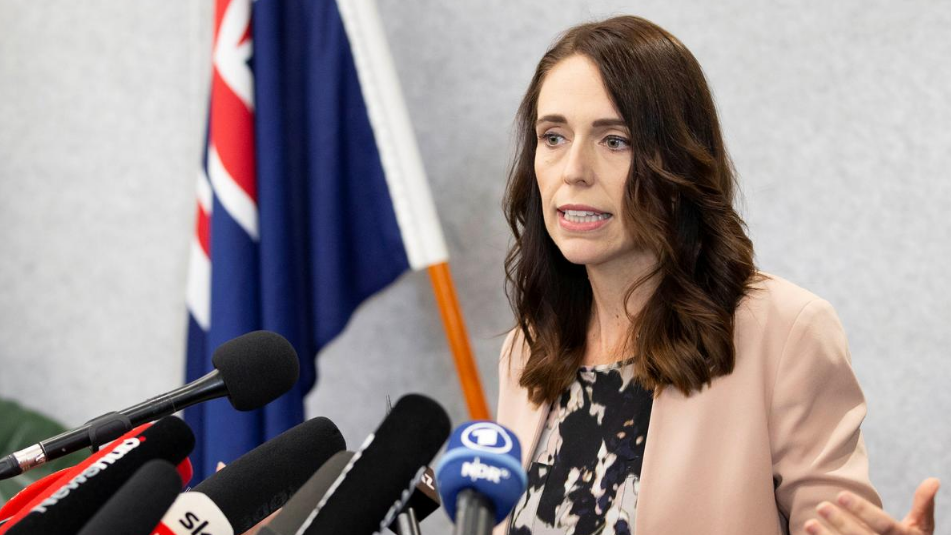
Above: Prime Minister Jacinda Ardern
Attorney-General David Parker was later quoted as saying that the government would ban semi-automatic guns, but subsequently backtracked, saying that the government had not yet committed to anything and that regulations around semi-automatic weapons was “one of the issues” the government would consider.

Above: David Parker
The day after the attacks, some gun-store owners reported an increase in sales, particularly of semi-automatic weapons, in response to the prospect of stricter laws.
The New Zealand auction website Trade Me banned the sale of semi-automatic weapons on its platform and some gun owners responded to the attacks by voluntarily handing in their weapons to police.

At a press conference on 18 March, Ardern said details of the proposed reforms would be given by 25 March.
On 21 March, she announced a ban, adding that she was working to have legislation in place as early as 11 April.
As a transitional measure, from 3:00 pm that day, some semi-automatic rifles and shotguns were classified as requiring the owner to hold a licence with an “E” endorsement.
“After a reasonable period for returns, those who continue to possess these firearms will be in contravention of the law,” Radio New Zealand reported.
A “gun buy-back” scheme was also considered.

The 2019 Arms (Prohibited Firearms, Magazines and Parts) Amendment Act was introduced in the House of Representatives on 1 April, and passed its first reading the following day.
The final reading was passed on 10 April, supported by all parties in Parliament except ACT.
It became law by the end of the week.

Above: Parliament Buildings of New Zealand, Wellington
All legally obtained semiautomatic and military-grade firearms and their relevant ammunition were able be handed over to police in a buy-back scheme.
On 13 July, the gun buy-back scheme was initiated, where 607 collection points for owners to turn in their prohibited firearms were held.
On 20 December, the gun buy-back scheme ended.
Provisional data from police as of show of 21 December that a total of 33,619 hand-ins had been completed, 56,250 firearms had been collected (51,342 as buy-back and 4,908 under amnesty), 2,717 firearms had been modified, and 194,245 parts had been collected (187,995 as buy-back and 6,250 under amnesty).
Police Minister Stuart Nash hailed the buy-back scheme as a success, but Nicole McKee, the spokeswoman of the Council of Licensed Firearms Owners, said that the buyback had been a failure and claimed that there are 170,000 prohibited guns in New Zealand, so “50,000 is not a number to boast about“.

Above: Stuart Nash

Granted that there is seldom perfection in the ways that governments react, but what is important to note is that the New Zealand government acted, in all three controversies involving religion, in ways that were both common sense and compassionate.

Kiwis love receiving praise about their country and this is what this Canuck is attempting to do here.
Kiwis know they take rather more interest in other countries than those in other countries take in them.
(A massacre is not the kind of attention any nation wants.)
This lack of reciprocal attention grieves Kiwis a little, though they say politely that it is a natural consequence of being few in number and living at the bottom of the map.
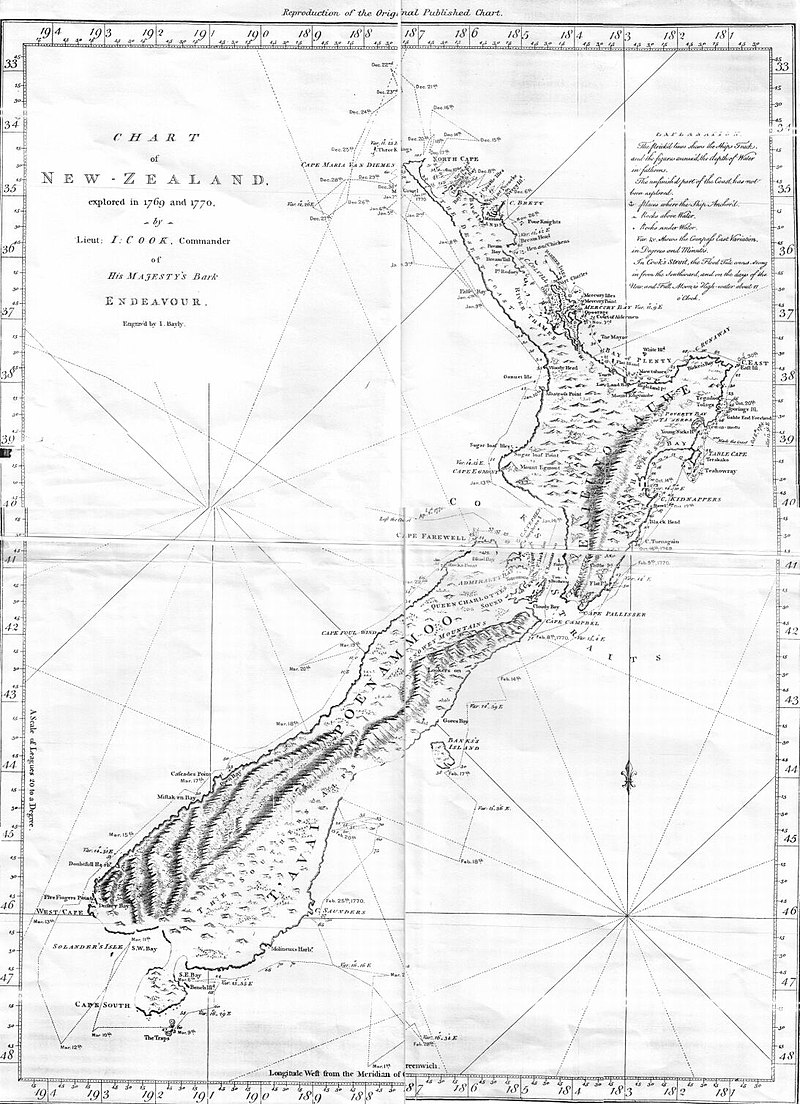
In fact, Kiwis enjoy nothing more than a chance to educate those who live under a cloud of ignorance concerning their country.
A common preoccupation of Kiwis abroad is watching out for their nation’s name in their host country’s newspapers.
Any mention is pounced upon, even if, as is most likely, it concerns a natural disaster or is confined to the sports pages.

Above: The Realm of New Zealand
Still, Kiwis are quick to remind others about their country’s successes.
Conversations with them are often studded with references to the deeds of their famous fellows.
Outside the world of sport, there are four nationals few would question as being well-known abroad:
- mountaineer Edmund Hillary
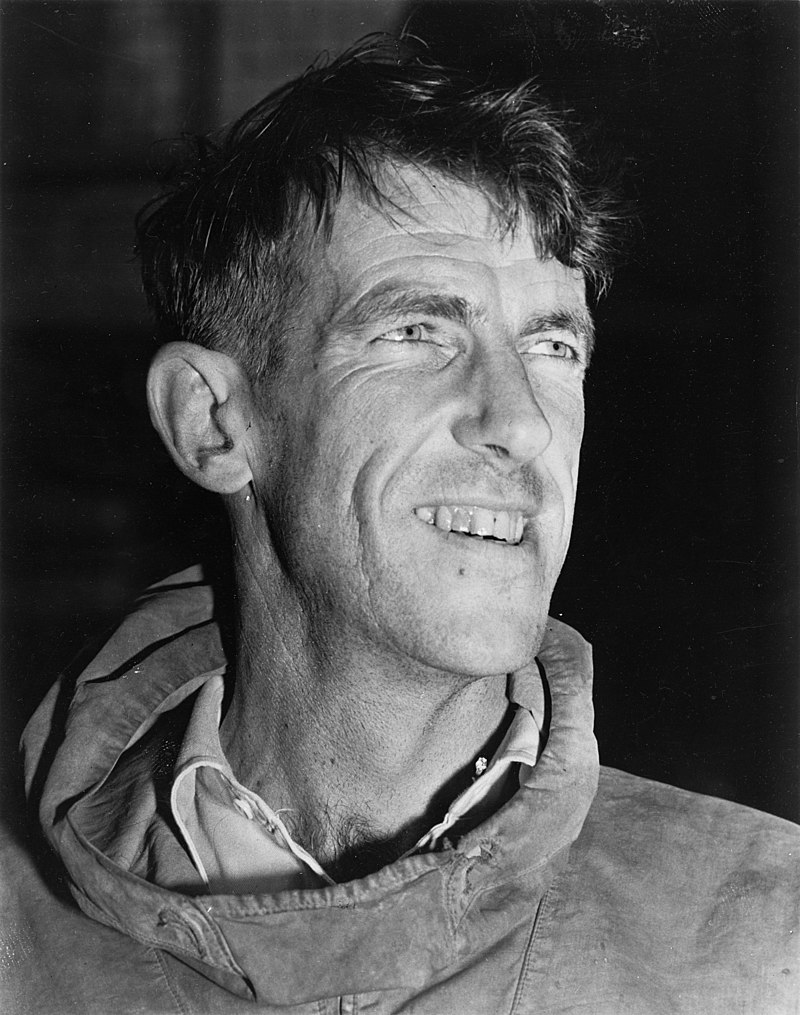
Above: Edmind Hillary (1919 – 2008)
(On 29 May 1953, Hillary and Sherpa mountaineer Tenzing Norgay (1914 – 1986) became the first climbers confirmed to have reached the summit of Mount Everest.

Above: Mount Everest
They were part of the 9th British expedition to Everest.

Above: Tenzing and Hillary
From 1985 to 1988, Hillary served as New Zealand’s High Commissioner to India and Bangladesh and concurrently as Ambassador to Nepal.
As part of the Commonwealth Trans-Antarctic Expedition he reached the South Pole overland in 1958.
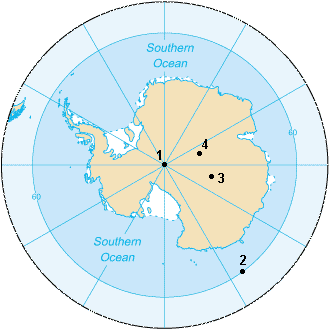
He subsequently reached the North Pole, making him the first person to reach both poles and the summit of Everest.

Time magazine named him one of the 100 most influential people of the 20th century.
Following his ascent of Everest, Hillary devoted himself to assisting the Sherpa people of Nepal through the Himalayan Trust, which he established.

His efforts are credited with the construction of many schools and hospitals in Nepal.
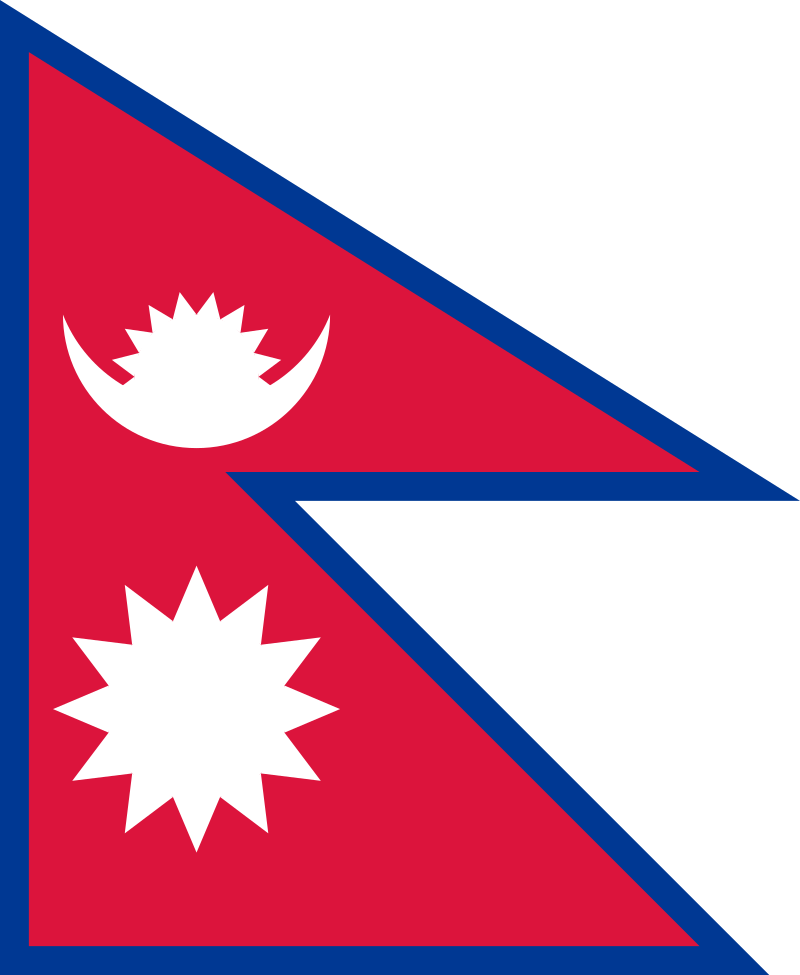
Above: Flag of Nepal
Hillary had numerous honours conferred upon him, including the Order of the Garter in 1995.
Upon his death in 2008, he was given a state funeral in New Zealand.)

- writer Katherine Mansfield

Above: Katherine Mansfield (1888 – 1923)
(I have read her In a German Pension, a 1911 collection of short stories written after her stay in Bad Wörishofen, a German spa town, in 1909, where she was taken by her mother after her disastrous marriage, pregnancy and miscarriage.
Some reflect on the habits and demeanour of Germans.
Some refer to the exploitation and repression of women by men.)

- nuclear scientist Ernest Rutherford
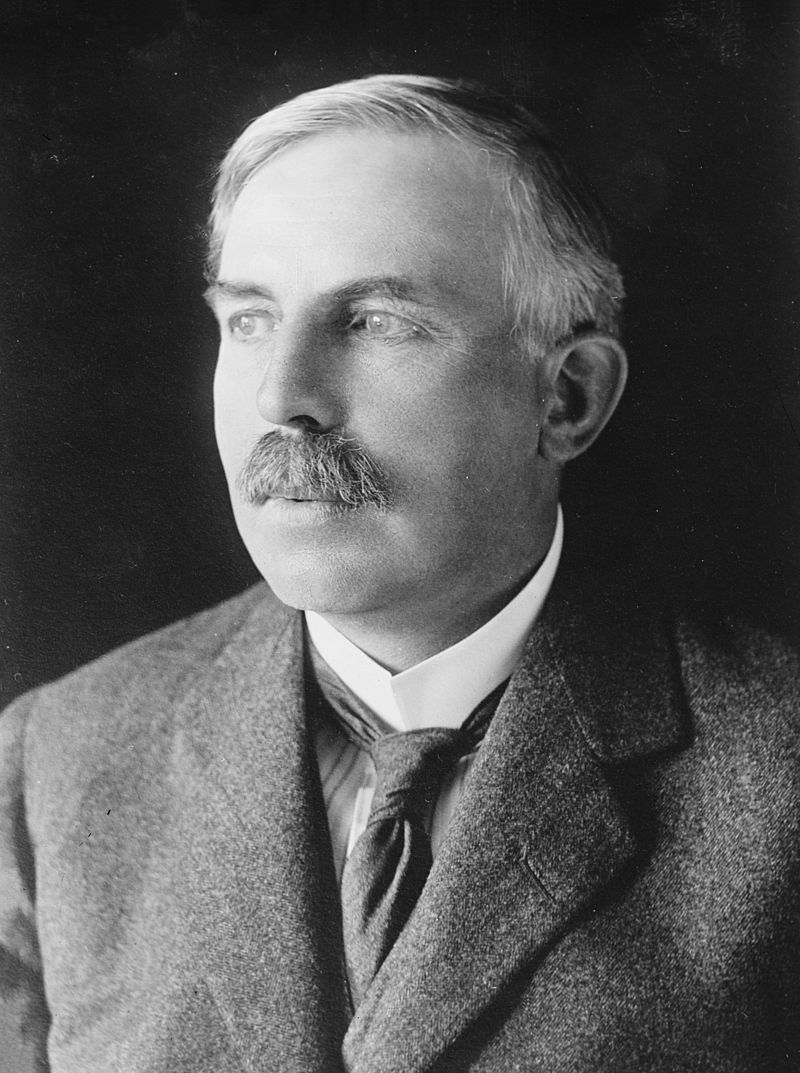
Above: Ernest Rutherford (1871 – 1937)
(Rutherford discovered the concept of radioactive half-life, the radioactive element radon, and differentiated and named alpha and beta radiation.
This work was performed at McGill University in Montréal.
It is the basis for the Nobel Prize in Chemistry he was awarded in 1908 “for his investigations into the disintegration of the elements, and the chemistry of radioactive substances“, for which he was the first Canadian and Oceanian Nobel laureate.
Rutherford moved in 1907 to the University of Manchester in the UK, where he and Thomas Royds proved that alpha radiation is helium nuclei.

Above: Helium discharge tube
Rutherford performed his most famous work after he became a Nobel laureate.
In 1911, although he could not prove that it was positive or negative, he theorized that atoms have their charge concentrated in a very small nucleus, and thereby pioneered the Rutherford model of the atom, through his discovery and interpretation of Rutherford scattering by the gold foil experiment of Hans Geiger and Ernest Marsden.
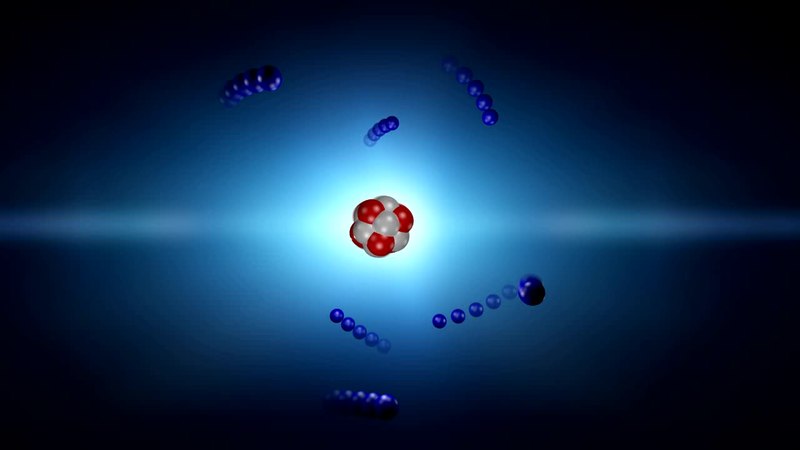
He performed the first artificially induced nuclear reaction in 1917 in experiments where nitrogen nuclei were bombarded with alpha particles.
As a result, he discovered the emission of a subatomic particle which, in 1919, he called the “hydrogen atom” but, in 1920, he more accurately named the proton.
Rutherford became Director of the Cavendish Laboratory at the University of Cambridge in 1919.
Under his leadership the neutron was discovered by James Chadwick in 1932 and in the same year the first experiment to split the nucleus in a fully controlled manner was performed by students working under his direction, John Cockcroft and Ernest Walton.
After his death in 1937, he was buried in Westminster Abbey near Sir Isaac Newton.
The chemical element rutherfordium (element 104) was named after him in 1997.)

- opera singer Kiri Te Kanawa
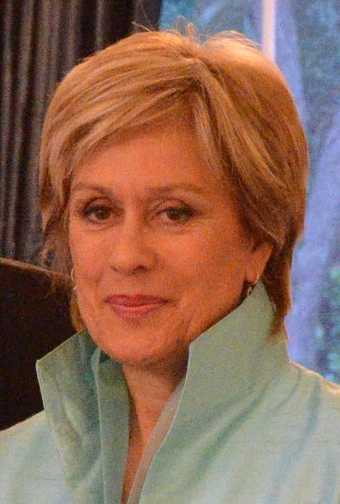
Above: Kiri Te Kanawa, 2013
Kanawa is a New Zealand opera singer.
She had a full lyric soprano voice, which has been described as “mellow yet vibrant, warm, ample and unforced”.
Te Kanawa had three top 40 albums in Australia in the mid-1980s.
Te Kanawa has received accolades in many countries, singing a wide array of works in many languages dating from the 17th to the 20th centuries.
She is particularly associated with the works of Mozart, Strauss, Verdi, Handel and Puccini, and found considerable success in portraying princesses, nobility, and other similar characters on stage.
Though she rarely sang opera later in her career, Te Kanawa frequently performed in concert and recital, gave masterclasses, and supported young opera singers in launching their careers.
Her final performance was in Ballarat, Australia, in October 2016, but she did not reveal her retirement until September 2017.
This is, of course, thought to be an absurdly short list in view of New Zild’s overall contribution to the world, such as:
- Godfrey Brown, once the world’s fastest sheep shearer
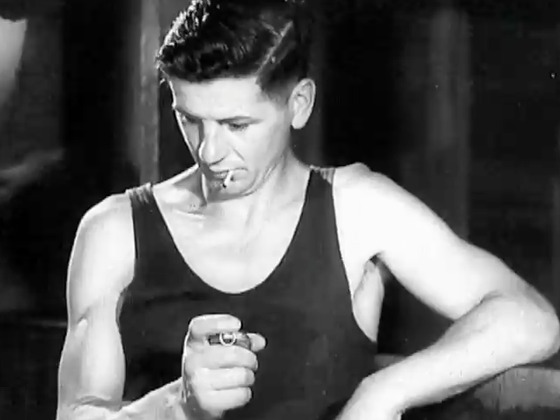
Above: Godfrey Brown
- William Atack, the first man to use a whistle to stop a sporting event

Above: William Atack
- Ernest Godward, inventor of the spiral hairpin

Regardless of the topic, therein lies a tale of Kiwi greatness.
Kiwis would like to be seen as people of consequence (and conscience) living in a country with much to offer the rest of the world.
As a first step they wish the rest of the world would learn just where they are on the globe.
And colour it clean green.

Above: Aoraki / Mount Cook is the highest point in New Zealand, at 3,724 metres.
Because of this, Kiwis were shocked by the way the American government reacted to the Kiwi nuclear-free policy instituted in the 1980s which prevented access of American nuclear-powered naval vessels to New Zealand’s territorial waters.
The US took this anti-nuclear policy as an insult (Bullies are always insulted when someone refuses them.) and cast New Zealand out of the three-power ANZUS (Australia, New Zealand and the US) defence alliance.

New Zealand’s anti-nuclear position was enormously strengthened when the French resumed their nuclear testing at Mururoa Atoll.
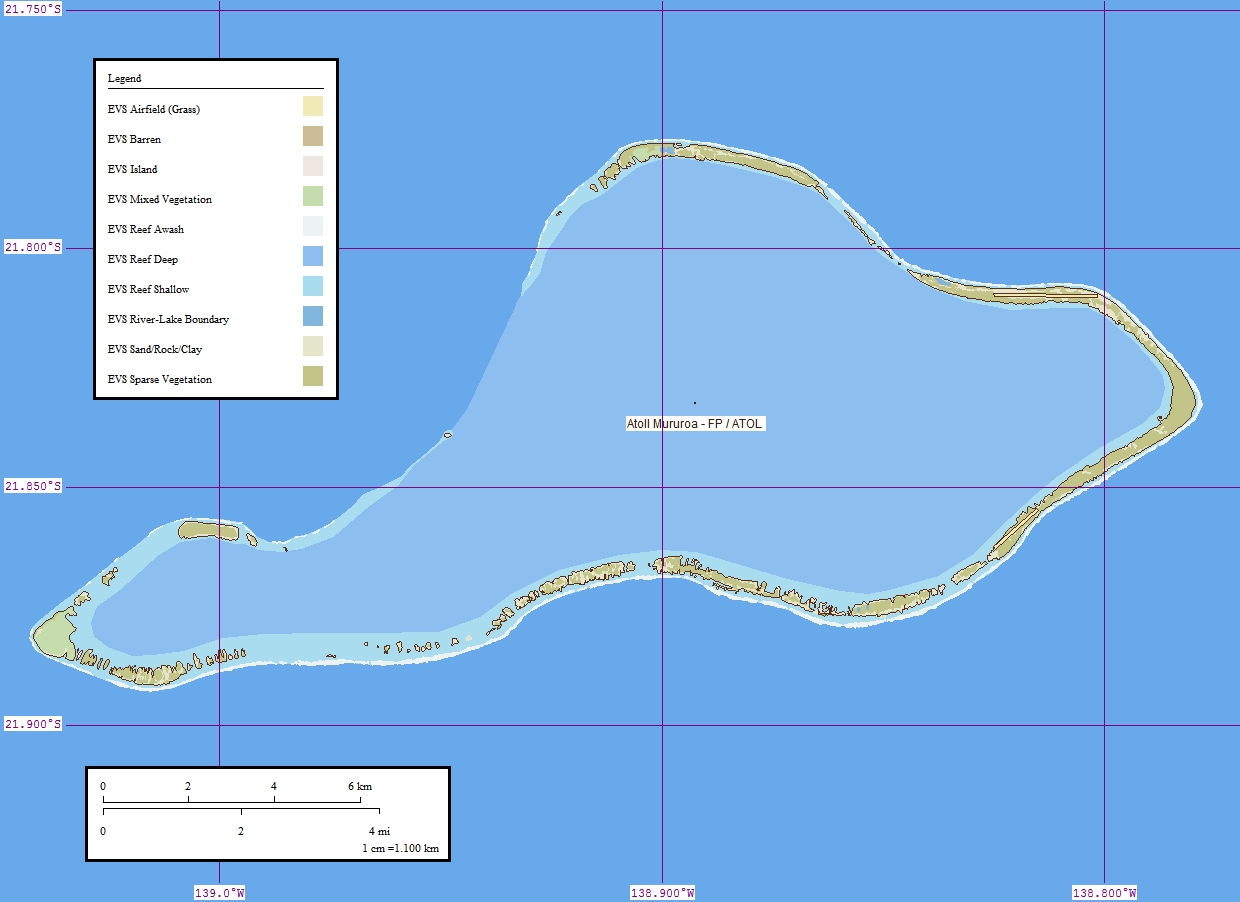
“The French have the bomb.
Still one of the few people that test their bombs.

Above: Types of nuclear testing: 1. atmospheric, 2. underground, 3. exoatmospheric, and 4. underwater
The underground tests.
Where do they do it?
In the Sahara?
In a total wasteland?
No, f… off.
No.
In Tahiti, in Paradise.

Above: Muruoa Lagoon, 1972
Why?
Because we’re French.”

Above: Flag of France
(Robin Williams)

Above: Robin Williams (1951 – 2014)
Incensed that this should be happening in their Pacific backyard, Kiwis, backed by the Aussies, led the united South Pacific opposition, demanding that the French conduct their underground nuclear tests a little closer to home (preferably under the Arc de Triomphe).

Above: Arc de Triomphe, Paris
Kiwis are not an especially zealous people, but the Americans and French between them brought about an almost religious conversion of the entire country to the anti-nuclear banner.

Kiwis and Aussies share a love of the great outdoors, with tourism and agriculture key economic sectors in both countries.
The Kiwis do not need the Aussies’ jokes reminding them that New Zealand hillsides are blanketed with fluffy white sheep.
There are close to 40 million of them – which means the country has ten times as many sheep as people – and they graze almost everywhere.

Kaikoura is a small coastal town on the east coast of the South Island of New Zealand, about 180 km north of Christchurch and 130 km south of Blenheim.
It is famous for its marine mammals (whales, dolphins, seals) and other sealife, all of which you can see, some of which you can swim with and some you can eat.
In Maori, kai means eat and koura is crayfish, so Kaikoura is a place to eat crayfish.

Above: Kaikoura
Kaikoura lies on a coastal plain and a peninsula between high mountains and the Pacific Ocean.
In places along this coast the mountains drop almost straight into the sea, with barely enough flat land for a single railway line, two-lane road and rocky beach, and even then some short tunnels are needed on corners.
The steepness of the mountains reflects the underwater geography, with the deep water Hikurangi Trench and the continental shelf edge lying just offshore south of the peninsula.
This makes the ocean around Kaikoura rich in sealife, attracting seals, whales (and humans) to the area to partake in the bounty of the sea.

The town has a similar charm to an east coat USA beach town, with a hodgepodge of signs trying to grab tourists’ attention.
At the edges of the town, the more relaxed and nature-oriented activities again take precedence.
Kaikoura is the perfect place to enjoy both the wonders of the magnificent Pacific Ocean and the tall majestic mountains.
It is an ideal rest stop on a section of State Highway 1 that passes through isolated country north and south of the town.
.jpg)
The Coastal Pacific train runs through Kaikoura on its way between Picton and Christchurch each day from October through April.
It departs Christchurch at 0700, then departs Kaikoura at 0954, arriving in Picton at 1213.

The train journey is fantastic, with the mountains on one side and the ocean on the other.
The track follows the coast for the last part of the journey into Kaikoura and you can often see fur seals lazing on the rocks.

You might also sperm whales, dolphins and wandering albatross.

Above: Mother and baby sperm whales
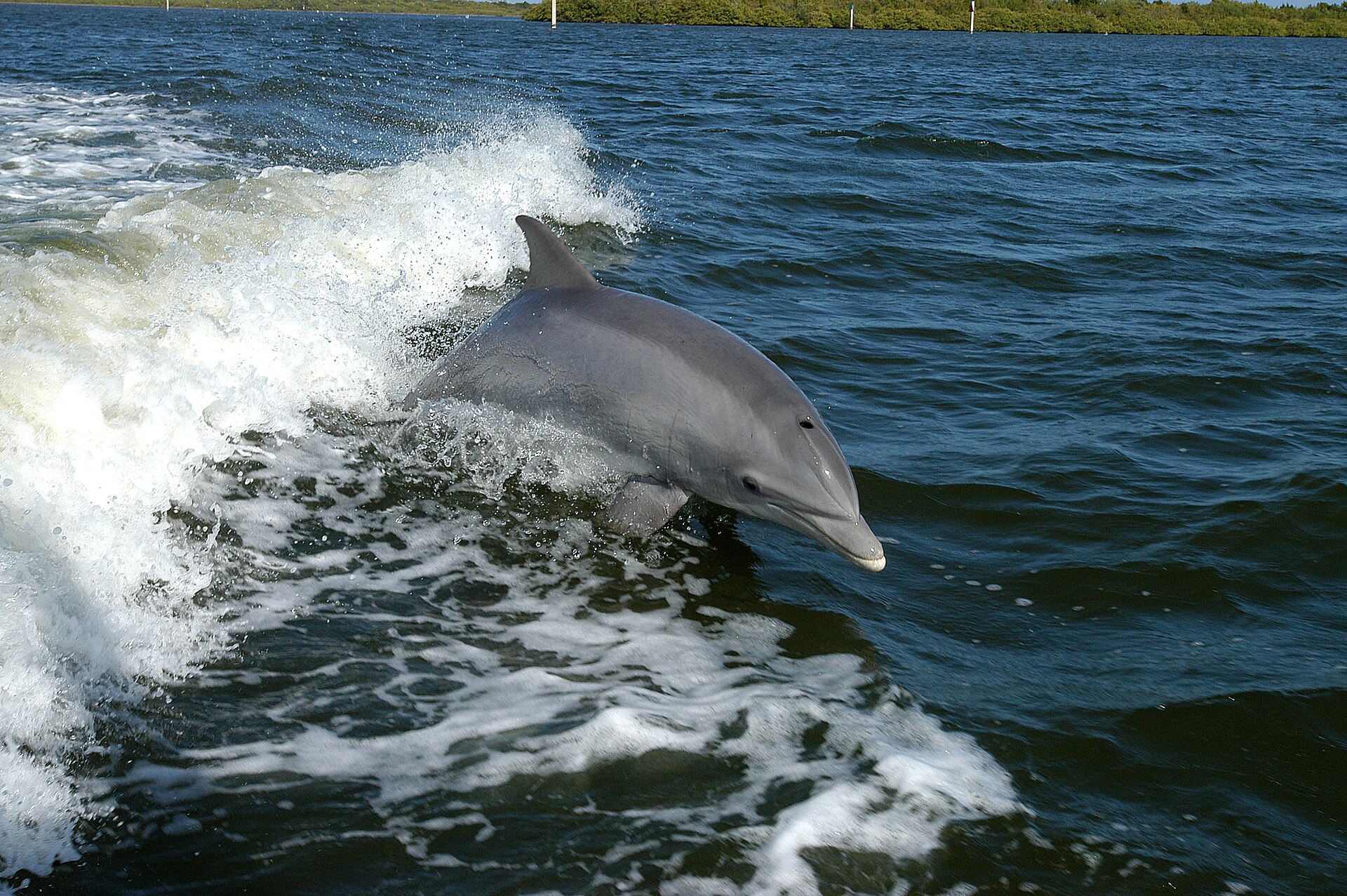
Above: Bottlenose dolphin
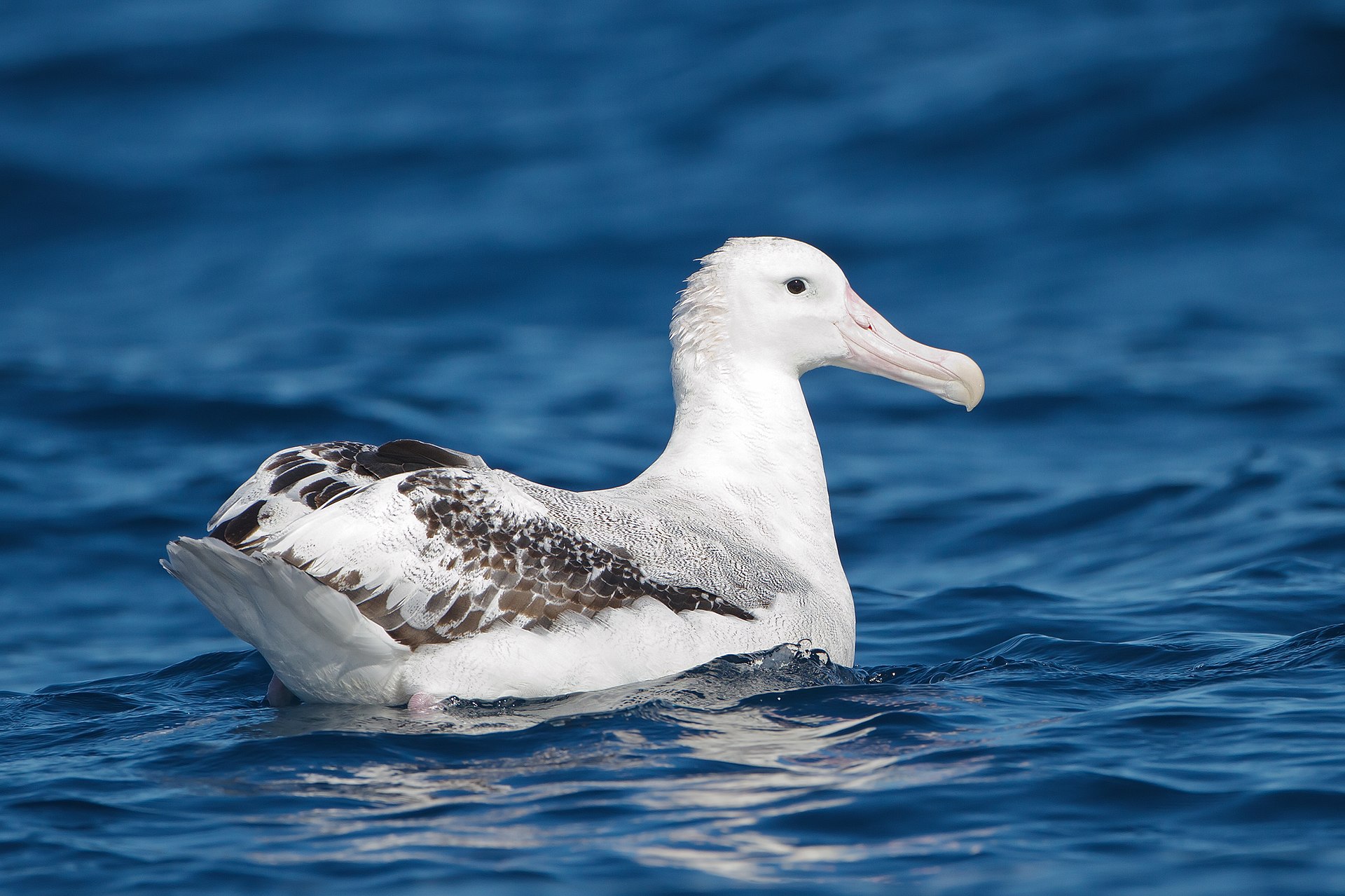
Above: Wandering albatross
Depending on the season you may also see migrating humpback whales, pilot whales, blue whales and southern right whales.

Above: Humpback whale
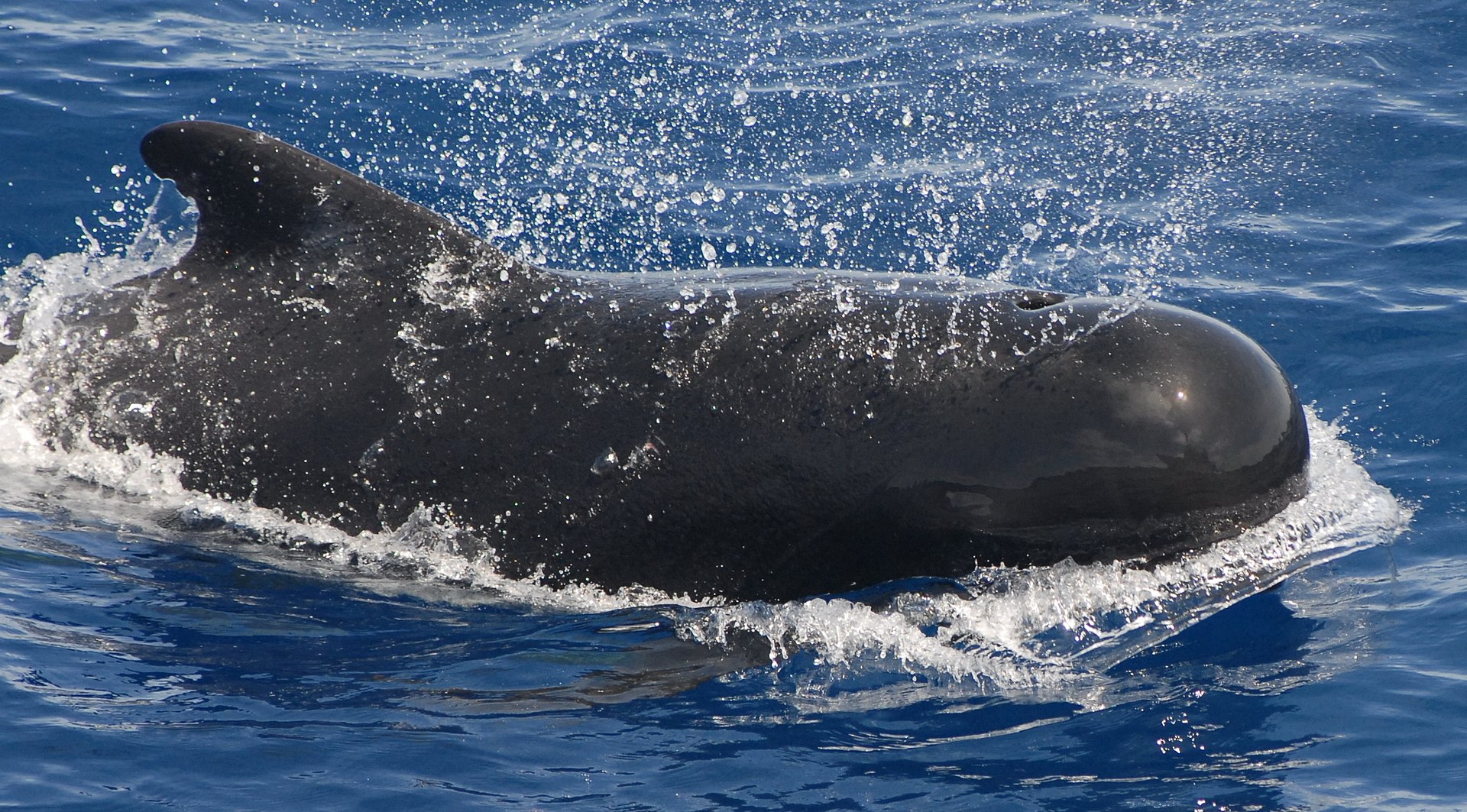
Above: Pilot whale

Above: Blue whale

Above: Southern right whale
Kaikoura often hosts the orca, the largest member of the dolphin family, and is home to the world’s smallest and rarest dolphin, the Hector’s.
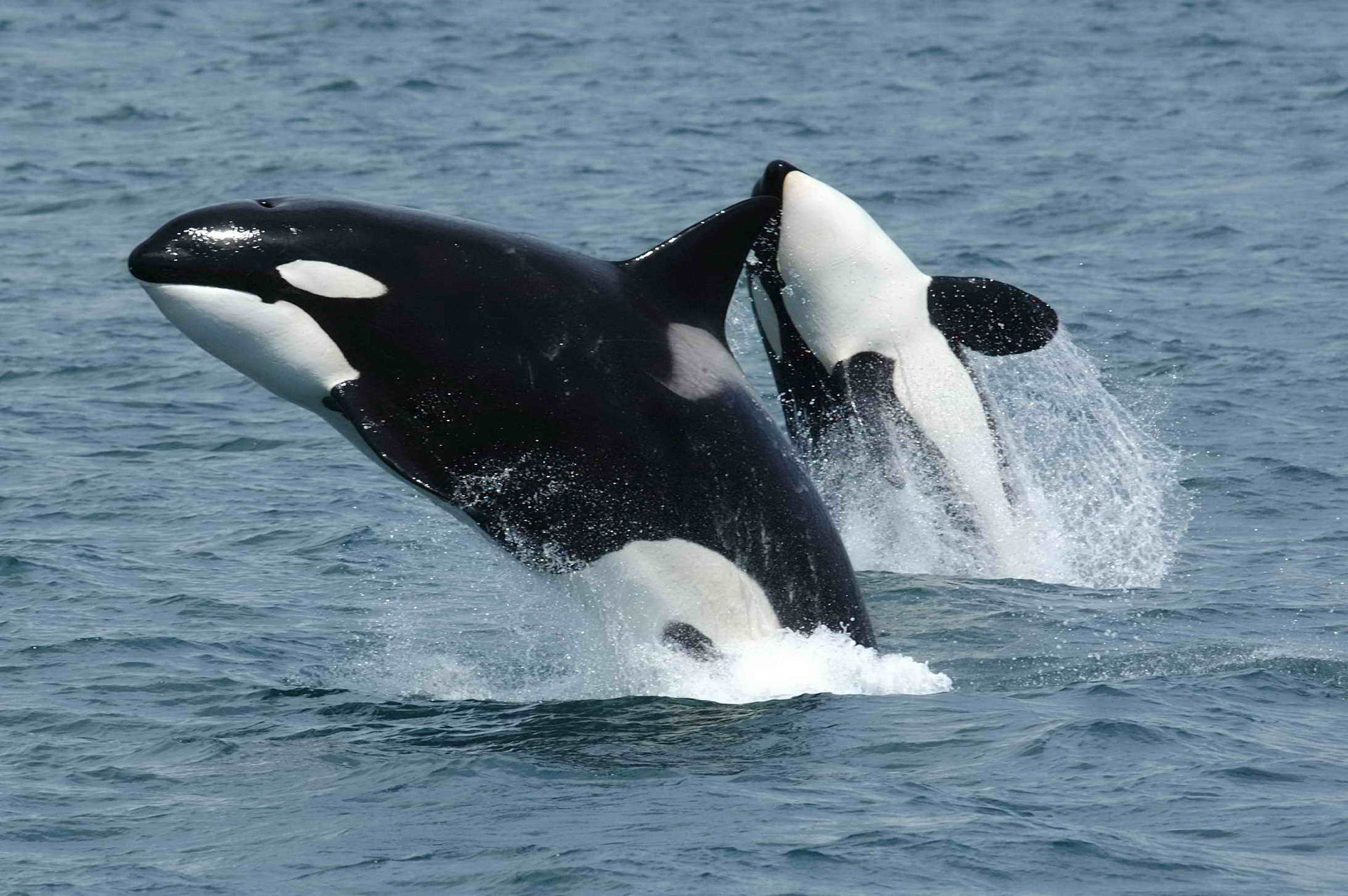
Above: Orcas (killer whales)

Above: Hector’s dolphins
Kaikoura also attracts the largest concentration and variety of seabirds on mainland New Zealand, including 13 species of albatross, 14 varieties of petrels and seven types of shearwater.

Above: Cape petrel

Above: Great shearwater (Puffinus gravis)
A taxi driver in New Zealand has swapped drunken revellers for wayward seabirds in an attempt to halt the decline of one of the nation’s endangered species.
Local cabbie Toni Painting leads a volunteer army that scours the streets of the South Island town of Kaikoura in the middle of the night in search of Hutton’s shearwater chicks that crash-land onto the road – mistaking the shiny bitumen for the sea.
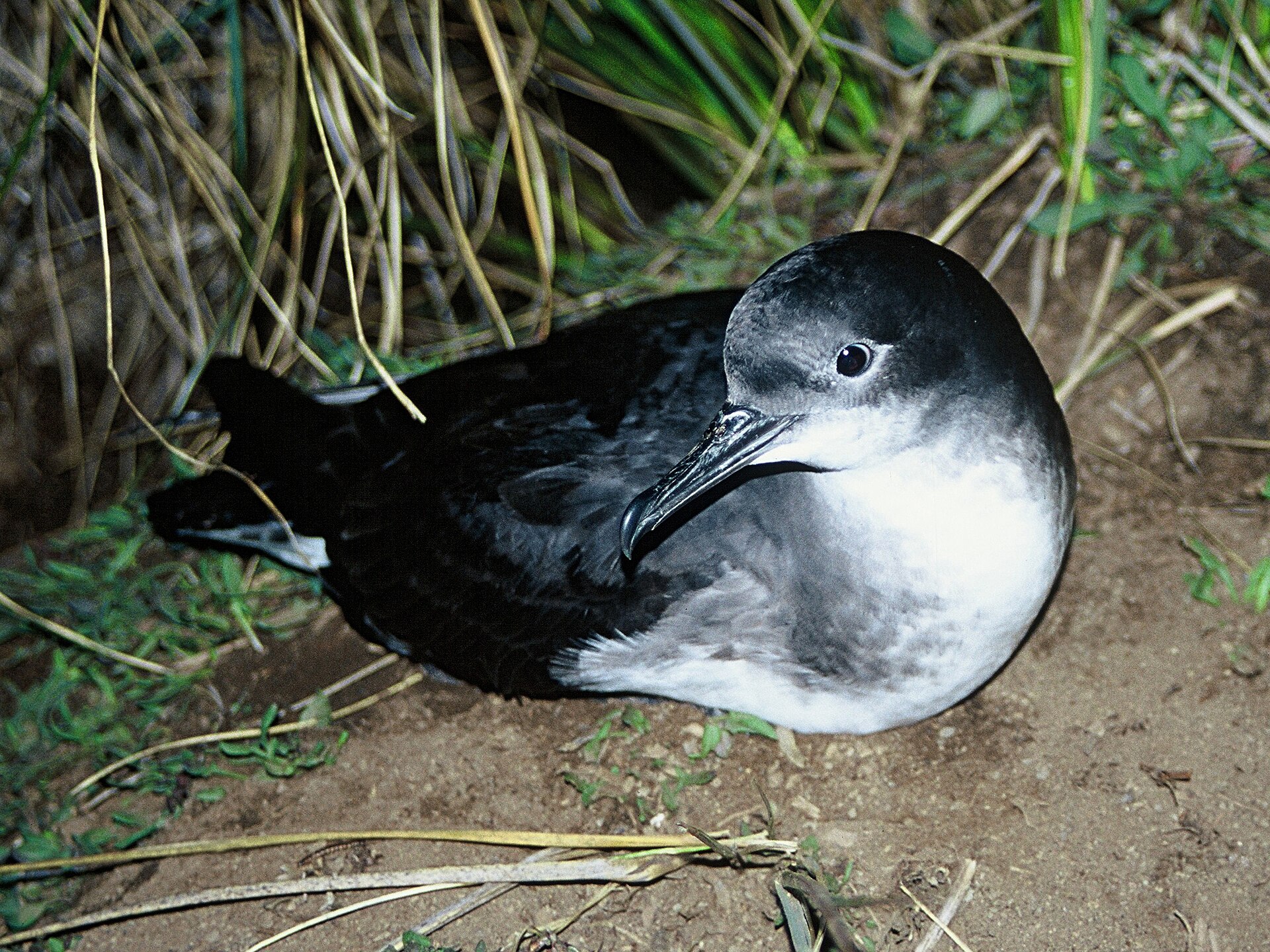
Above: Hutton’s shearwater
Painting was the first to spot the seabird chicks dazed and confused around town on foggy nights five years ago.
Now she patrols each evening in fledging season, collecting the wayward birds and delivering them to a nearby rehabilitation centre, who then take them out to sea.

Above: Toni Painting
Hutton’s shearwater are the only seabird in the world that nests and raises its young in the mountains, at heights around 1,200 metres.
Since the 1960s, their breeding colonies have reduced from eight to two, classifying them for “endangered” status by the Department of Conservation.

Above: Hutton’s shearwater breeding colony, Shearwater Stream, Seaward Kaikoura Range
Experts think the fledging chicks in Kalkoura are confusing black, shiny bitumen for the surface of the ocean on their first journeys out of their nest, especially on foggy, moonless nights.
Once they have crash-landed the birds are unable to walk on land, or move, and often get hit by vehicles, or eaten by roaming cats or dogs.

“I go out half an hour after dark.
Then I go out every hour until half past midnight, it takes them half an hour to get down from the mountains,” said Painting, who keeps animal boxes in her taxi to hold the chicks, which are fluffy, heavy and grey.
“If there’s a lot of birds coming down I can go all night, if I have passengers they will help me too.”

On an average night during fledging season, which runs through March and April, between 10 and 20 birds will be found on local Kaikoura roads, especially those bordering the coast.
Painting said on her busiest night more than 200 birds were rescued, with volunteers working through till dawn.

Ted Howard is the chairman of the Hutton’s Shearwater Charitable Trust.
He says the local Kailouta community was well-used to the birds’ antics now and on any given night about a dozen volunteers would be out patrolling the roads.
The highest death toll was 12 dead shearwaters in one night, which Howard said was “a tragedy” as the birds were so rare.
“We call them crash-landers.
They really are fascinating and strange birds.
They are the only seabird on the planet that breeds in the high mountains,” Howard said.
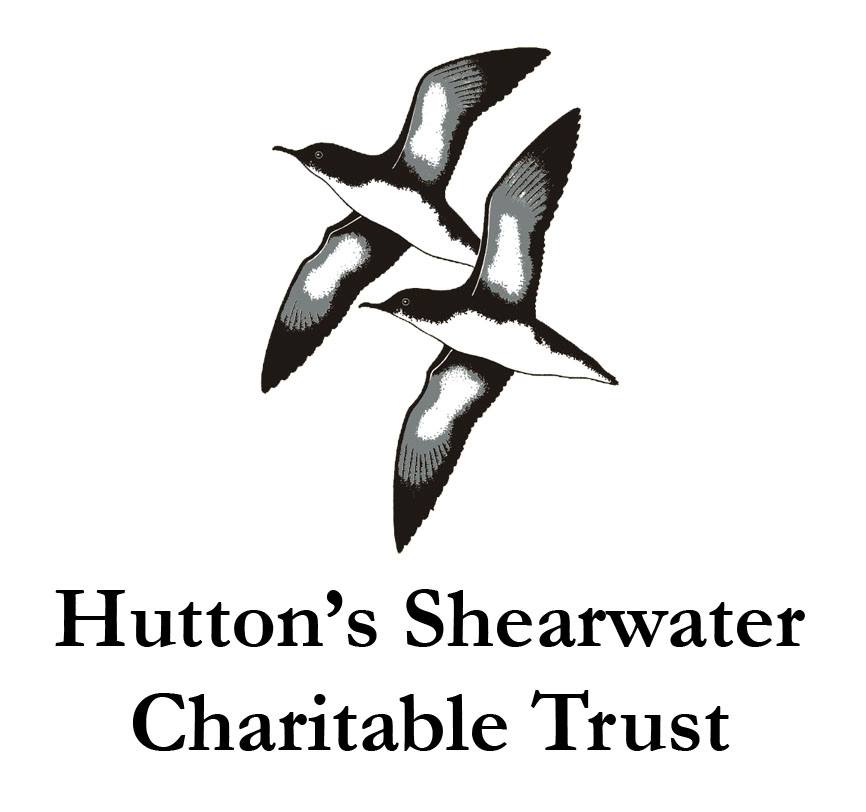
Once the birds have been rehabilitated they are taken out on dolphin watching boats and released over the water.
In its primal state, New Zild had practically no native creatures except birds and seals.
All others have been imported – even pests such as wasps.
Other than the katipo, a very rarely seen native spider, there are no poisonous creepy-crawlies wanting to end your life.

Above: Female katipo
The birds of New Zealand evolved into an avifauna that included many endemic species found in no other country.
As an island archipelago New Zealand accumulated bird diversity and when Captain James Cook arrived in the 1770s he noted that the bird song was deafening.
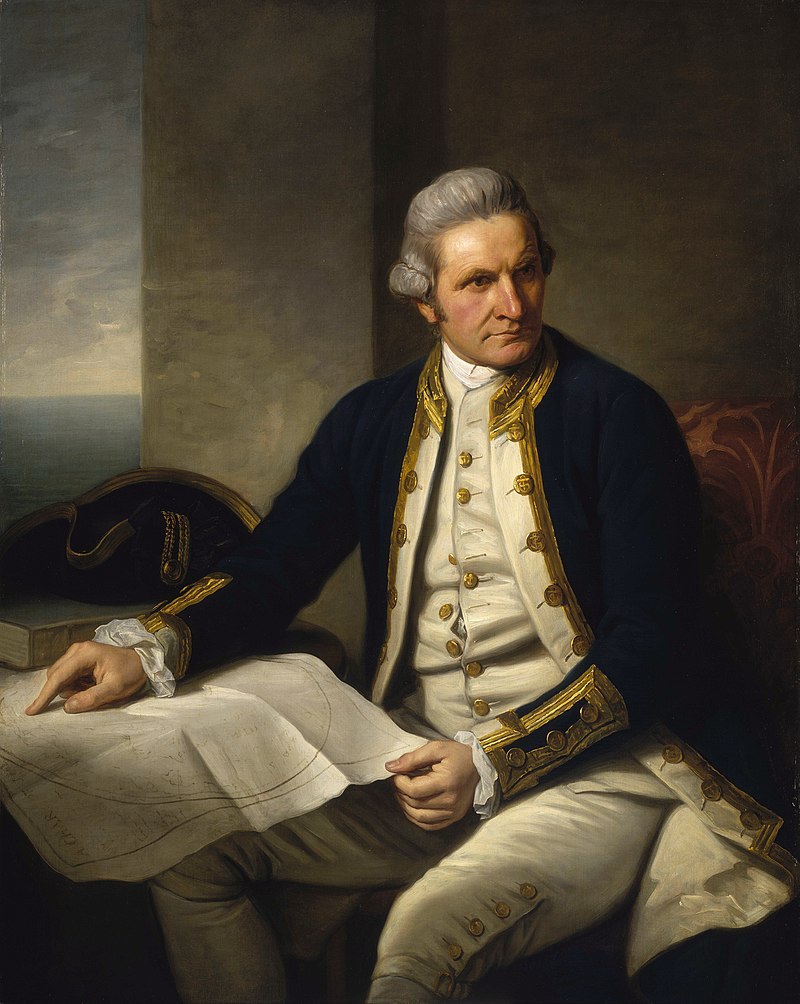
Above: James Cook (1728 – 1779)
The mix includes species with unusual biology such as the kakapo which is the world’s only flightless, nocturnal parrot which also exhibits competitive display breeding using leks.
There are also many species that are similar to neighbouring land areas.
A process of colonisation, speciation and extinction has been at play over many millions of years, including recent times.
Some species have arrived in human recorded history while others arrived before but are little changed.
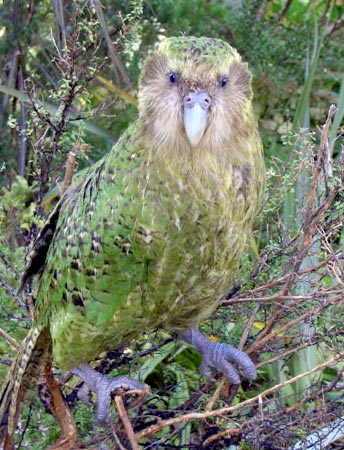
Above: Kakapo
Largely lacking the bright plumage found elsewhere, New Zealand’s birds – like its endemic plants – have an understated beauty which does not shout for attention.

Above: Kea (Nestor notabilis) is the world’s only alpine parrot and has high intelligence and inquisitiveness.
Among the most musical is the bellbird, common in both native and exotic forests, though likr many birds it is more likely to be heard than seen.
Its call is a series of liquid bell notes, most often sounded at dawn or dusk.

Above: New Zealand bellbird
The tui, another nectar eater and the country’s most beautiful, is a great mimic, with an inventive reprtoire that includes clicks, grunts and chuckles.
Notable for the white throat feathers which stand out against its dark plumage, the tui often feeds on flax flowers in suburban gardens but is most at home in densely tangled forest (“bush” to New Zealanders).
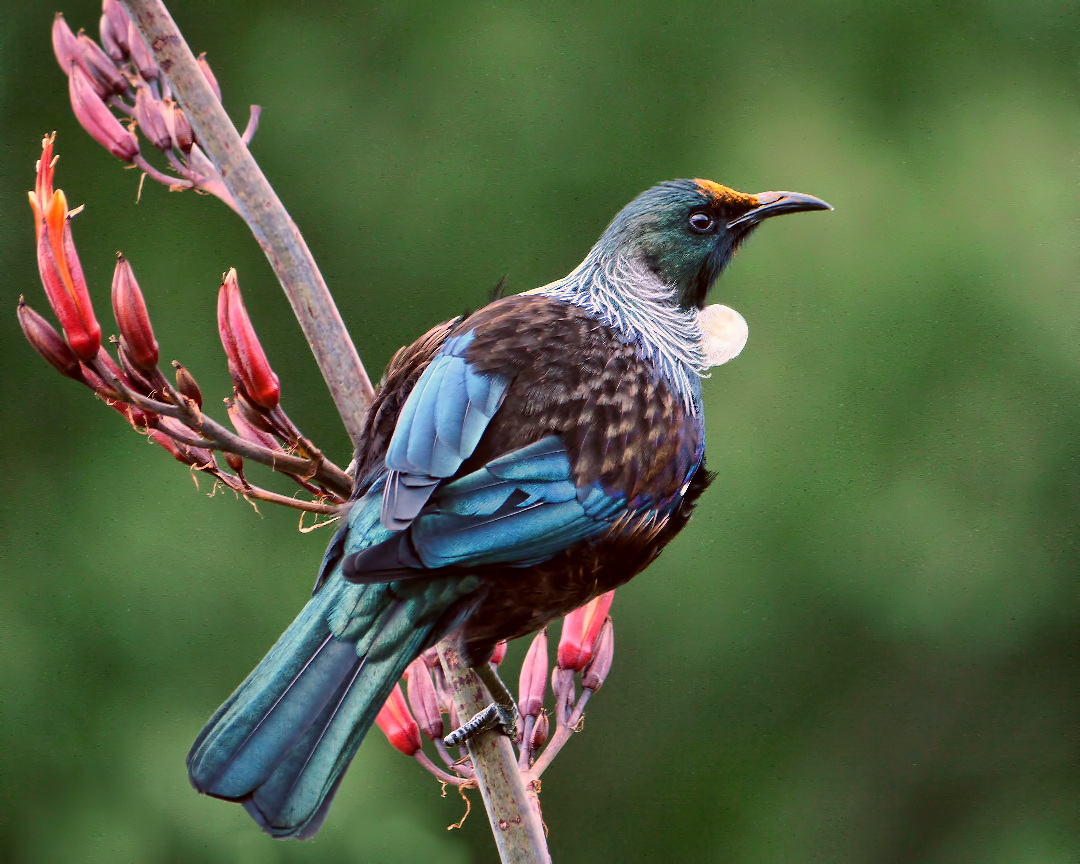
Above: Tui
Fantails are commonly encountered on forest trails, swooping and jinking to catch insects stirred up by passing hikers.
Above: New Zealand fantail
While pukeko, elegant swamp hens with blue plumage and bright red beaks, are readily seen along wetland margins and even on the sides of roads nearby.
Be warned.
They have little road sense.
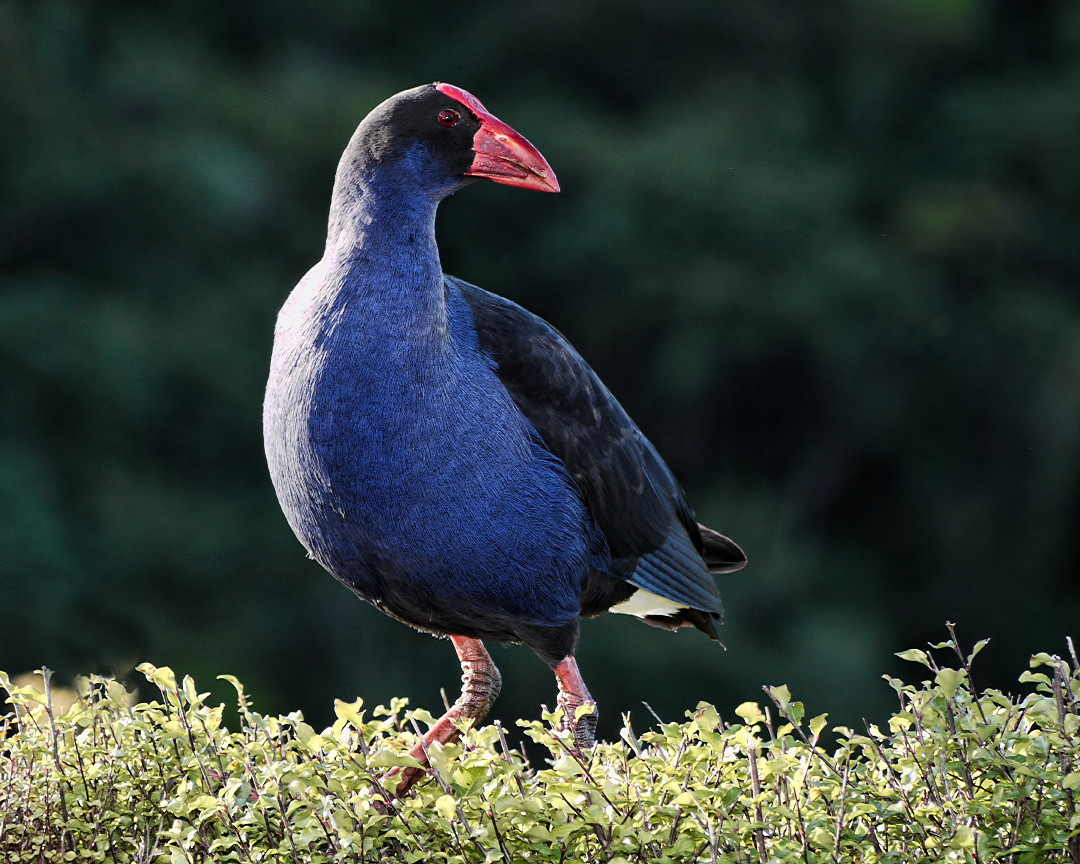
Above: Pukeko
If you spend any time in South Island high country, you are likely to come up against the fearless and inquisitve kea – an uncharacteristically drab green parrot with bright red underwings.
Kea are common in the car parks of the Fox and Franz Josef Glaciers where they hang out for food scraps or tear rubber from car windscreens.

Above: Kea
Then there is the takahe, a rare flightless bird thought extinct until a small colony was discovered in 1948 and the equally flightless kiwi, NZ’s national emblem and the nickname for New Zealanders themselves.
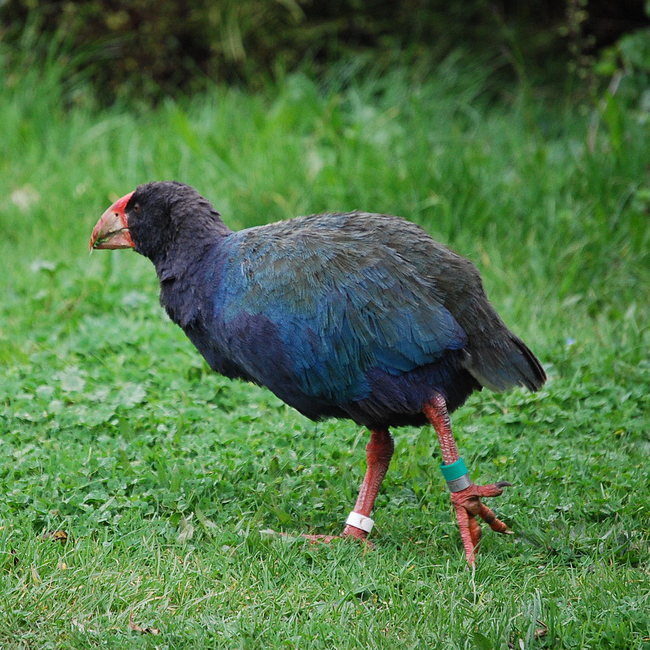
Above: South Island Takahe
The kiwi has a round body covered in coarse feathers, strong legs and a long, distinctive bill with nostrils at the tip for sniffing out food.
It is not easy to find them in the wild, but they can be seen in simulated environments at excellent nocturnal houses.

The birds of New Zealand are like the people themselves, understated, underestimated, beautiful and alive in ways few know, that few appreciate.
To me, the idea of a volunteer army led by a local taxi driver that scours the streets in the middle of the night to save endangered birds encapsulates why I admire the behaviour of New Zealanders in the handling of any crisis large or small.
There is so much to see and do in New Zild, from the northernmost point on North Island (Cape Reinga) to Stewart Island, just south of South Island: bungy jumping, rail trails, horse trekking, marine reserves, river canoeing, surfing, rambling around Rotorua, skydiving, cave exploring, glacier climbing….

Above: Cape Reinga Lighthouse

And the walks one can do:
- the Abel Tasman Coast Track (five-day, 51 km)

- the Coast to Coast Walkway (four-hour, 16 km)

- the Heaphy Track (82 km)
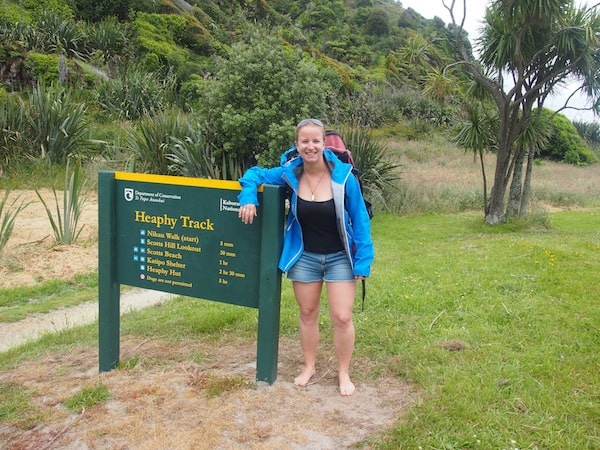
- the Hump Ridge Track (three-day, 53 km)

- the Kepler Track (four-day, 60 km)

- the Lake Walkaremoana Track (four-day, 46 km)

- the Milford Track (four-day, 54 km)

- the Mt. Taranaki Summit (eight-hours)
- the Queen Charlotte Track (five-day, 71 km)
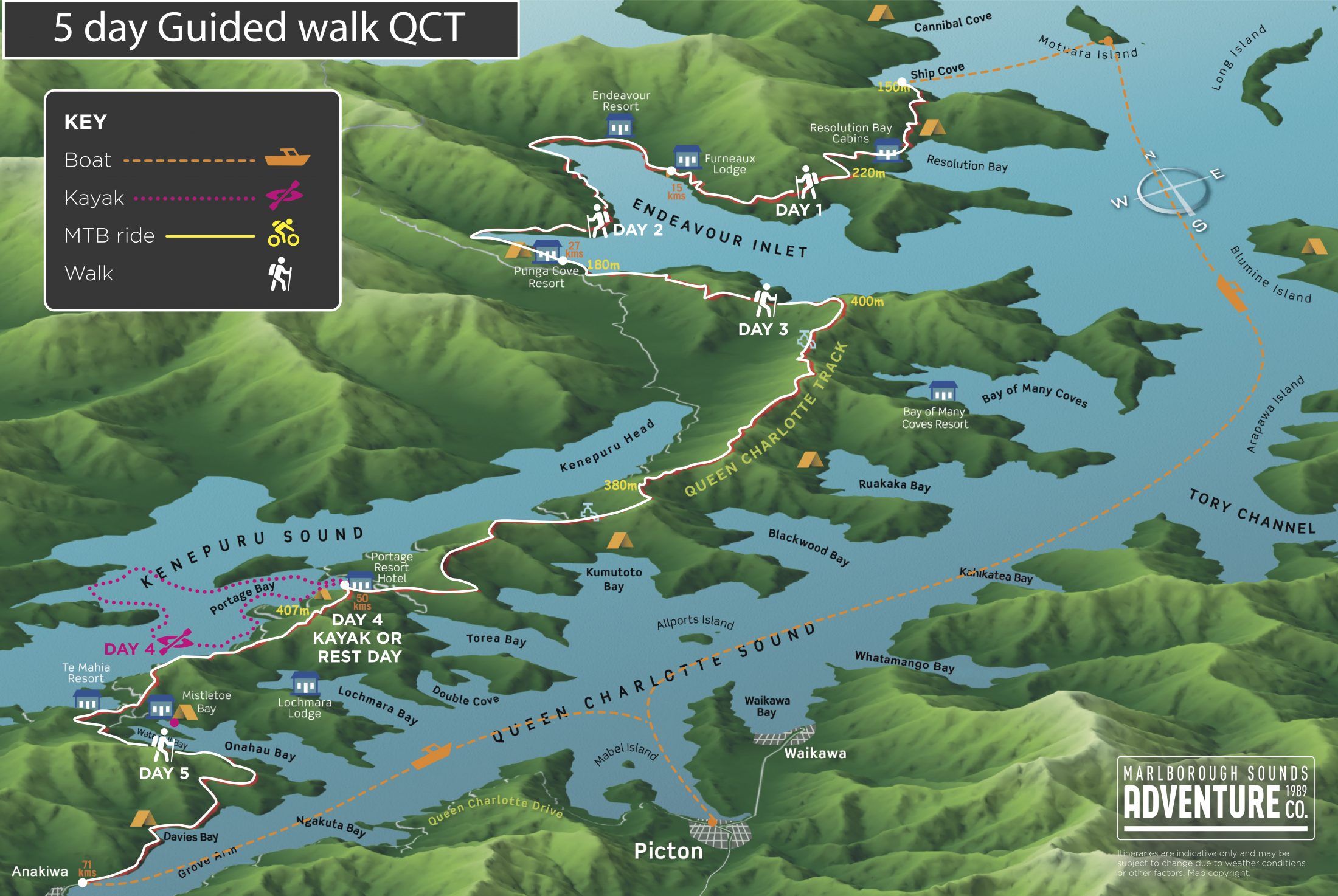
- the Tongariro Alpine Crossing (one-day, 18 km)

New Zealand may be small, remote and thinly populated, but it more than compensates for these deficiencies with its:
- cinematic scenery (The Lord of the Rings / The Hobbit / The Piano / Eagle vs Shark to name a few of many)




- fabulous festivals (World Buskers Festival / Rippon Festival / Fringe NZ / Pasifika Festival / NZ Gold Guitar Awards / Carrot Carnival / Queenstown Winter Festival / Nelson Arts Festival / Seafest / Opotiki Rodeo)




Above: Cook Island dancers at Auckland’s Pasifika Festivaö





- superb food and wine

Above: Pavlova

Above: Hangi

Above: Fish and chips

- magical outdoor experiences
- its powerful mainstream Maori culture

Above: A wharenui (Maori meeting house)
This is a country that recognizes and celebrates its indigenous people.

This is a kinder, gentler, more respectful place, where lizards live for a century and kauri trees for two millennia, a land of over 3,100 glaciers and 45 microbreweries.

Above: Baby Canterbury geckos

Above: Kauri tree Te Matua Ngahere (Father of the Forest) at Waipoua Forest (North Island, New Zealand)
Above: Franz Josef Glacier

This is a nation that could brag about itself and yet doesn’t.
If I could afford to, I would love to book a flight to Auckland, arrange a six-week holiday, and then lose my return ticket.

Above: Auckland International Airport
I may never get to Heaven (character defects et al.) but New Zealand seems as close to Heaven on Earth as this mere mortal might ever experience.
Crises come and crises go, but clearly the Kiwi character mix of common sense and compassion will take these all in their stride.
In my travels I picked up a T-shirt with the words:
“Fernweh: the desire to be in a place you have never been before“.
For me, that place is New Zealand.

Sources: Wikipedia / Google / Lonely Planet New Zealand / Christine Cole Catley and Simon Nicholson, Xenophobe’s Guide to the Kiwis / Eleanor Ainge Roy, “Seabirds get a lift to safety after crash-landing in fog“, The Guardian, 20 March 2020